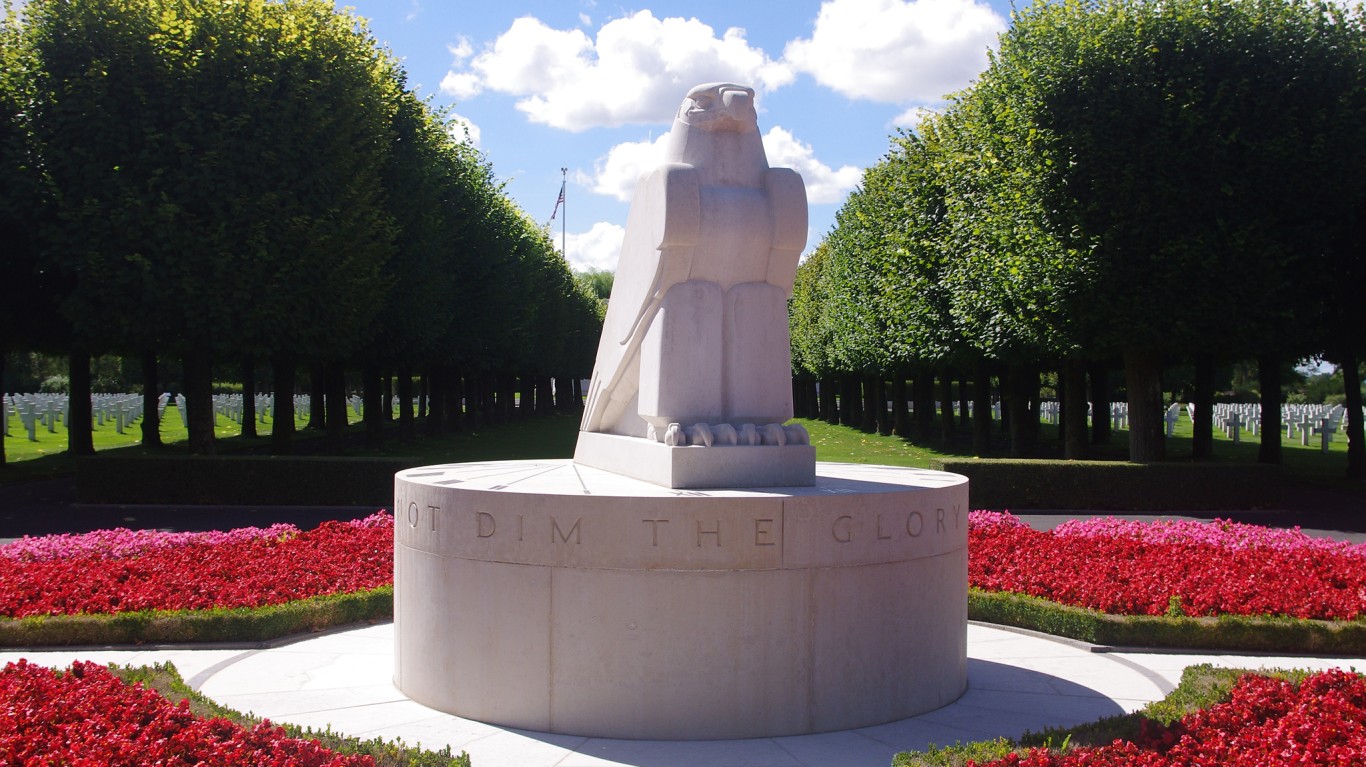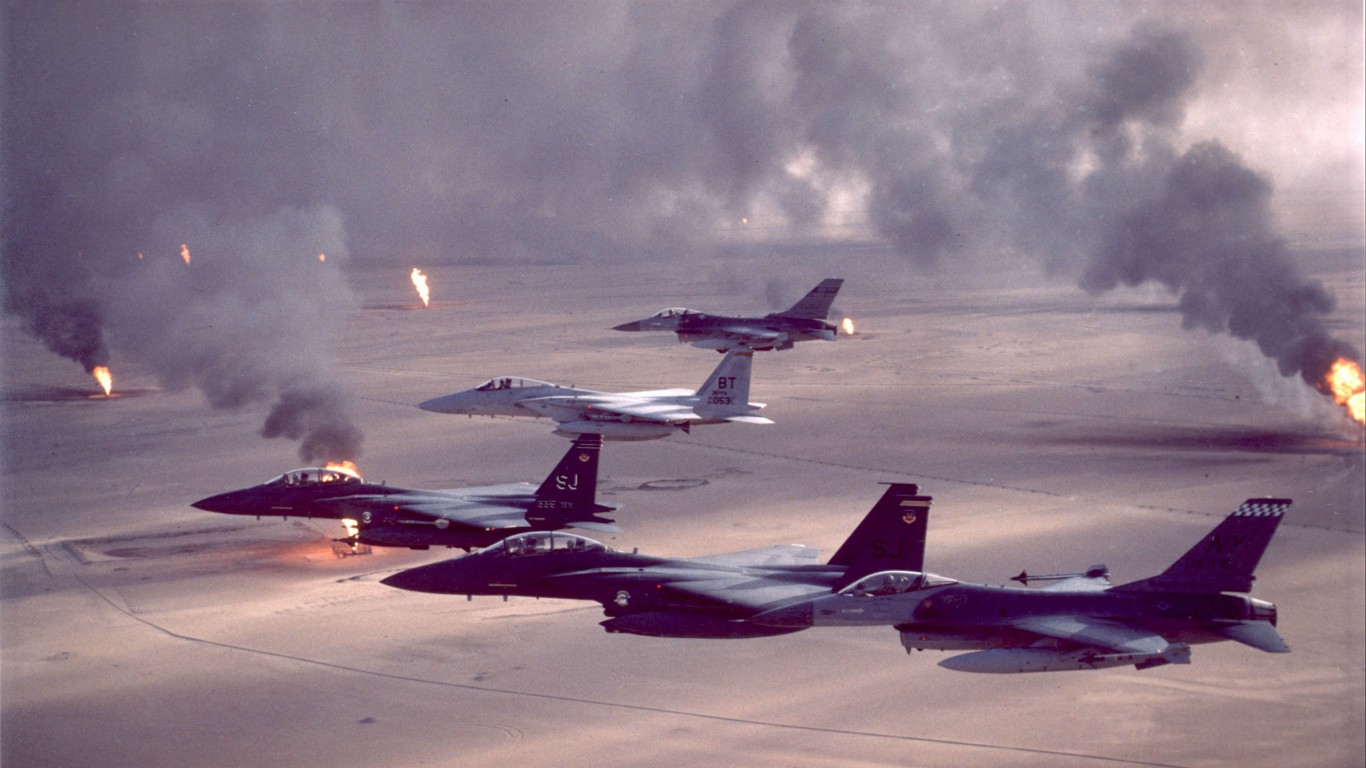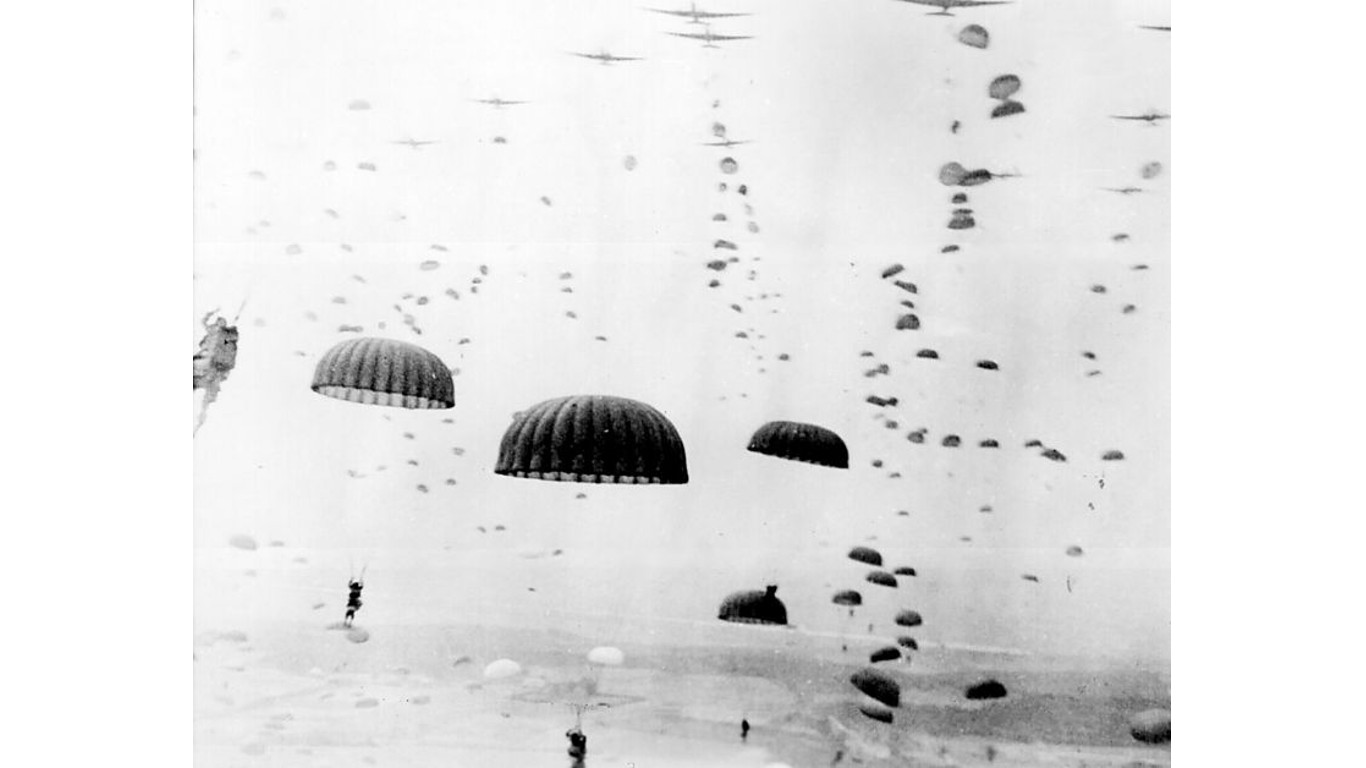
In the annals of American history, there are battles that have etched themselves into the collective memory, forever shaping the course of the nation. These monumental clashes, waged on fields both domestic and foreign, have left an indelible mark on the tapestry of America’s past. From the blood-soaked landscapes of the Civil War to the distant shores of far-flung conflicts, these battles stand as towering testaments to the courage, sacrifice, and resilience of those who fought – and often marked turning points in the overall conflicts of which they were part.
To compile a list of America’s largest battles, based on the total number of combatants, 24/7 Tempo consulted websites including History, the American Battlefield Trust, and the National World War II Museum, and World Atlas. The number of combatants, both total and U.S., for every battle is drawn from various sources and is approximate and sometimes disputed. Battles are ranked from lowest to highest number of total combatants. Where the total number in two battles is the same, the one with more American combatants is ranked higher.
Click here to see the biggest battles America has ever fought
Our list includes some of the most famous battles in American history, such as the Battle of Gettysburg, the Battle of Iwo Jima, and the Tet Offensive – as well as the Battle of Leyte Gulf, one of the most famous naval engagements in history. (These are the biggest American naval battles of WWII.)
Some of these battles were part of larger operations, lasting for months, while others took place in just one day – including the Battle of Antietam during the Civil War, considered the single bloodiest day of warfare Americans have ever suffered. (Here’s a list of the 18 deadliest battles in American history.)
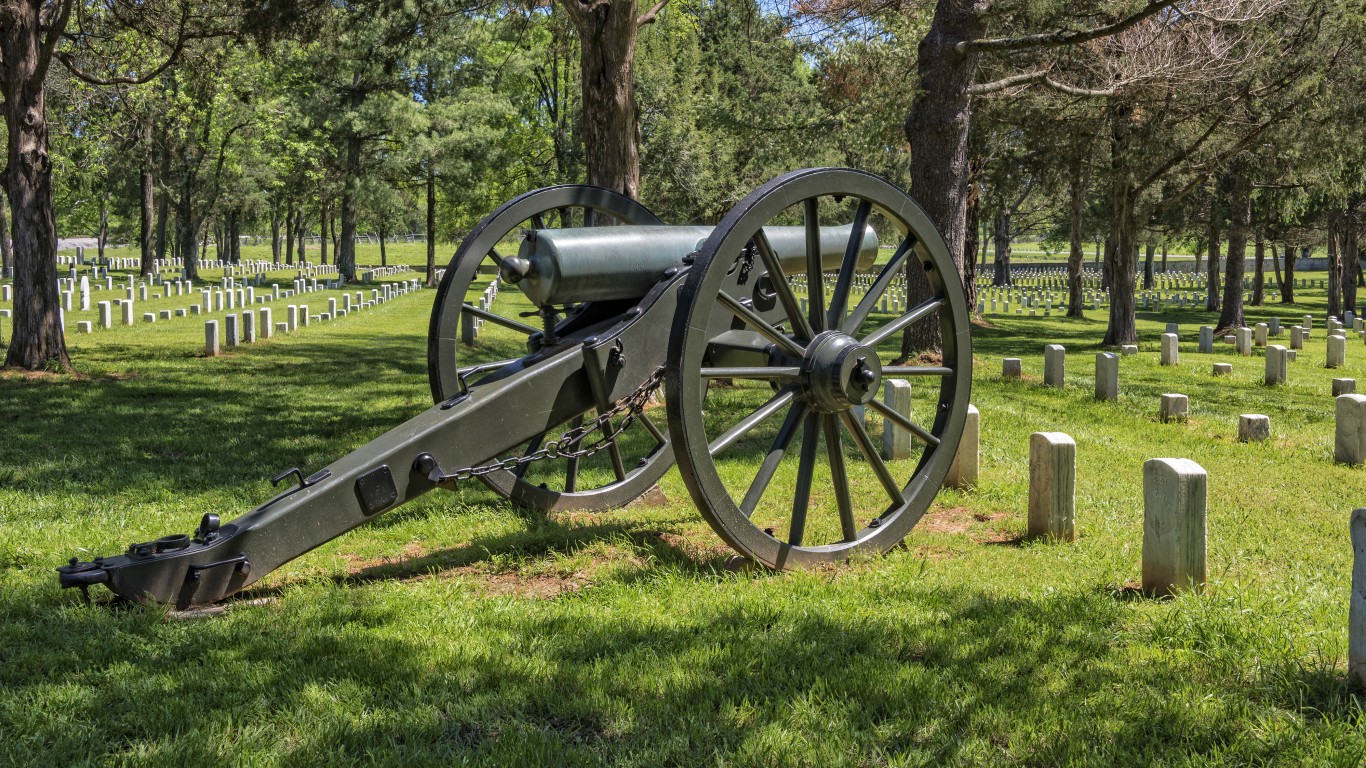
Stones River, Tennessee (Dec. 31, 1862-Jan. 2, 1863)
> War: Civil War
> Total combatants: 76,400
> U.S. combatants (Union): 41,400
This battle near Murfreesboro, Tennessee, witnessed fierce fighting and heavy casualties on both sides – the highest percentage of any major Civil War battle. Ultimately, the Union forces under General William S. Rosecrans emerged victorious, due in part to strategic errors by Confederate general Braxton Bragg, boosting Northern morale and solidifying their control over Middle Tennessee.
[in-text-ad]

Khe Sanh, South Vietnam (Jan. 21-July 9,1968)
> War: Vietnam War
> Total combatants: 85,000
> U.S. combatants: 36,000
Taking place near the border of Laos in South Vietnam, the battle saw intense fighting as North Vietnamese forces besieged the U.S. Marine garrison at Khe Sanh Combat Base. Despite heavy casualties and the prolonged nature of the siege, the American forces successfully defended the base and eventually withdrew, but the battle had a significant impact on public opinion in the U.S.
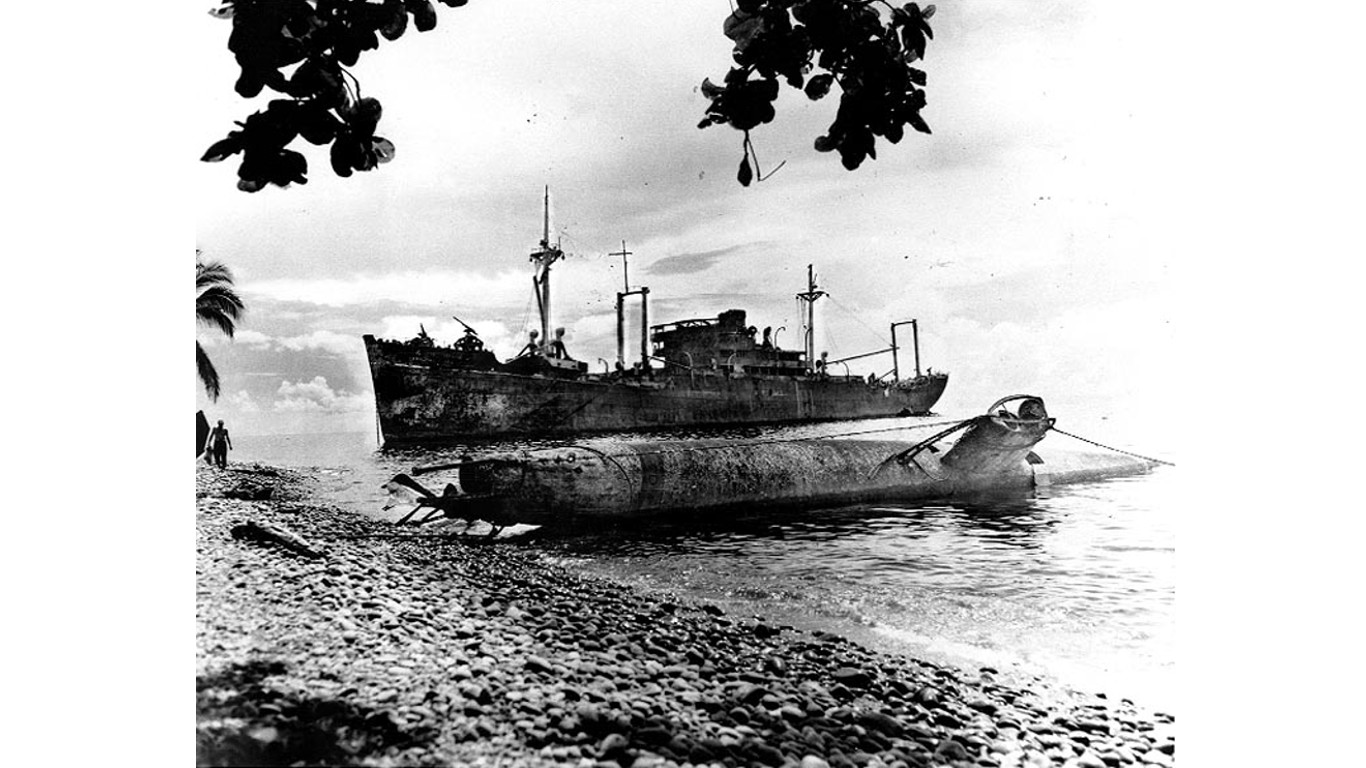
Guadalcanal, Solomon Islands (Aug. 7, 1942-Feb. 9, 1943)
> War: World War II
> Total combatants: 96,000
> U.S. combatants: 60,000
The first major offensive by Allied forces in the Pacific, the Battle of Guadalcanal aimed to secure an airfield and deny the Japanese a strategic base. The intense six-month campaign featured fierce naval battles and brutal ground combat, with the Allies ultimately prevailing and gaining a crucial foothold.

Inchon Landing, South Korea (Sept. 10-19, 1950)
> War: Korean War
> Total combatants: 100,000
> U.S. combatants: 75,000
The objective of the Inchon Landing was to launch a surprise amphibious assault on the port city of Inchon, on the west coast of South Korea, then held by the North Koreans. General Douglas MacArthur devised the plan to recapture the city and outflank the enemy forces. UN forces, primarily composed of U.S. Marines and Army units, achieved a surprise landing and quickly secured Inchon. The victory disrupted the North Korean supply lines and forced them into a retreat. The landing is considered one of the most successful amphibious operations in military history.
[in-text-ad-2]
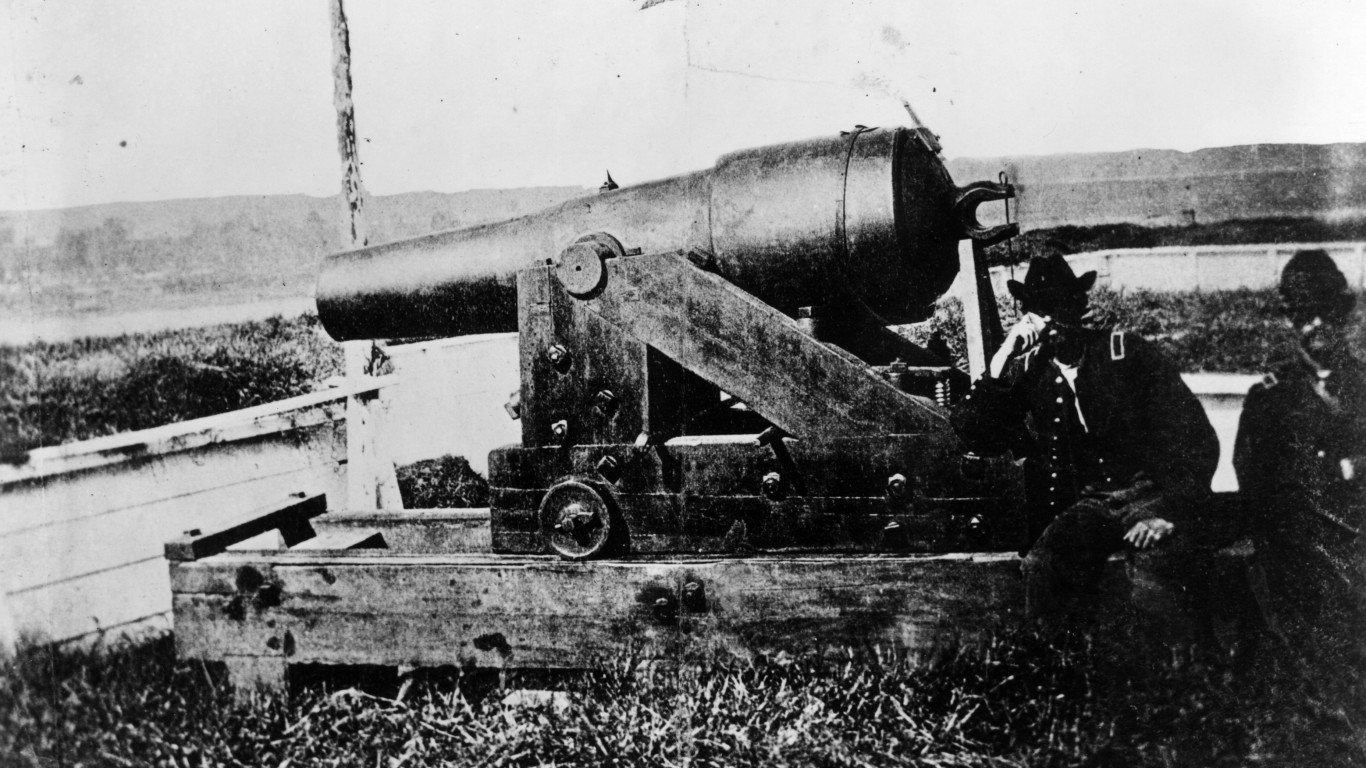
Vicksburg, Mississippi. (May 18-July 4, 1863)
> War: Civil War
> Total combatants: 110,000
> U.S. combatants (Union): 77,000
This was a pivotal engagement that resulted in Union victory. Led by General Ulysses S. Grant, the Union forces besieged the Confederate stronghold of Vicksburg, ultimately capturing it and gaining control of the Mississippi River, effectively splitting the Confederacy in two and securing a crucial strategic advantage for the Union.
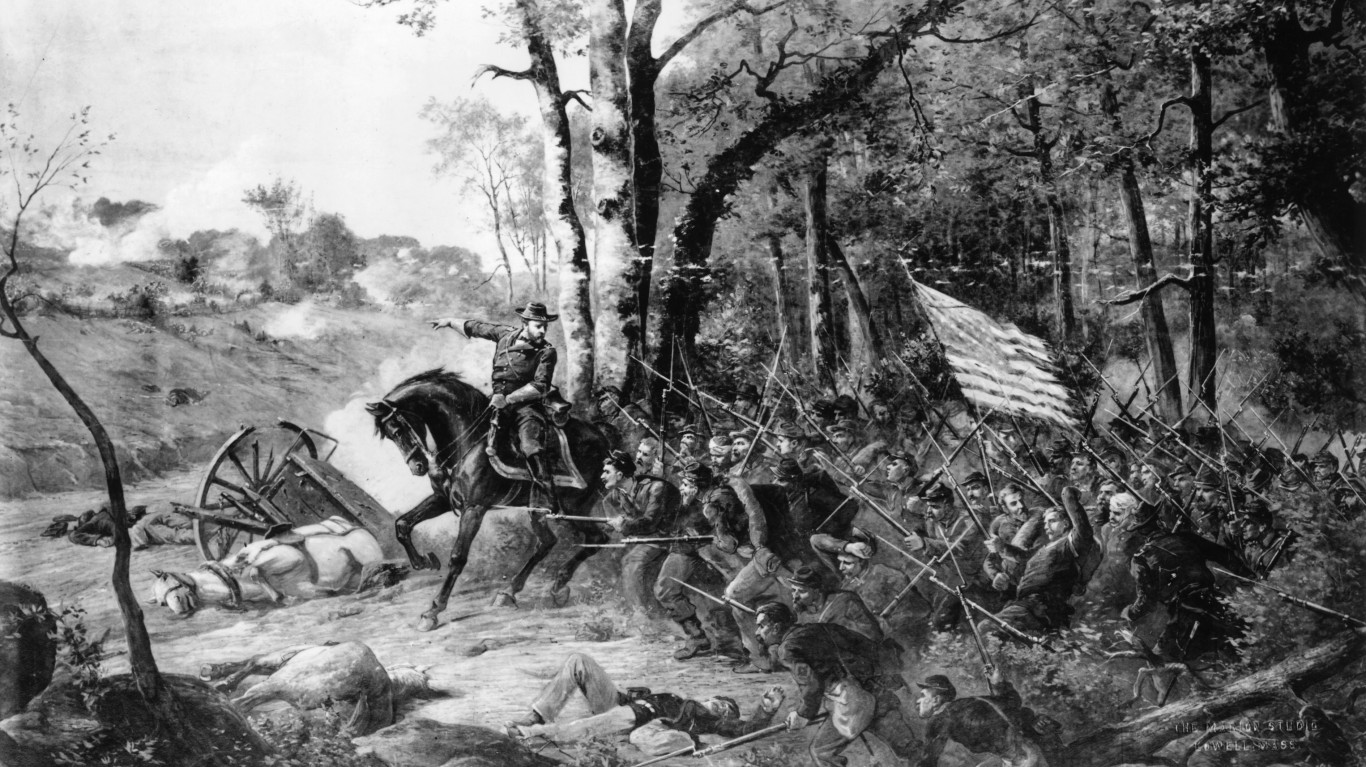
Shiloh, Tennessee (April 6-7, 1862)
> War: Civil War
> Total combatants: 111,500
> U.S. combatants (Union): 68,800
Fought near Pittsburg Landing, Tennessee, the Battle of Shiloh was a brutal confrontation between Union forces led by General Ulysses S. Grant and Confederate forces under General Albert Sidney Johnston. There were heavy casualties on both sides, but ultimately the Union emerged victorious, marking a turning point in the war’s Western Theater campaign and solidifying Grant’s reputation as a skilled commander.
[in-text-ad]

Chattanooga Campaign, Tennessee (Nov. 23-25, 1863)
> War: Civil War
> Total combatants: 121,400
> U.S. combatants (Union): 72,500
In this pivotal engagement in the Western Theater – the third of three Chattanooga battles – Union forces under General Ulysses S. Grant successfully broke the Confederate siege of Chattanooga, securing a crucial supply line and opening up the gateway to the Confederate heartland, ultimately setting the stage for the Union’s advance into Georgia the following year.
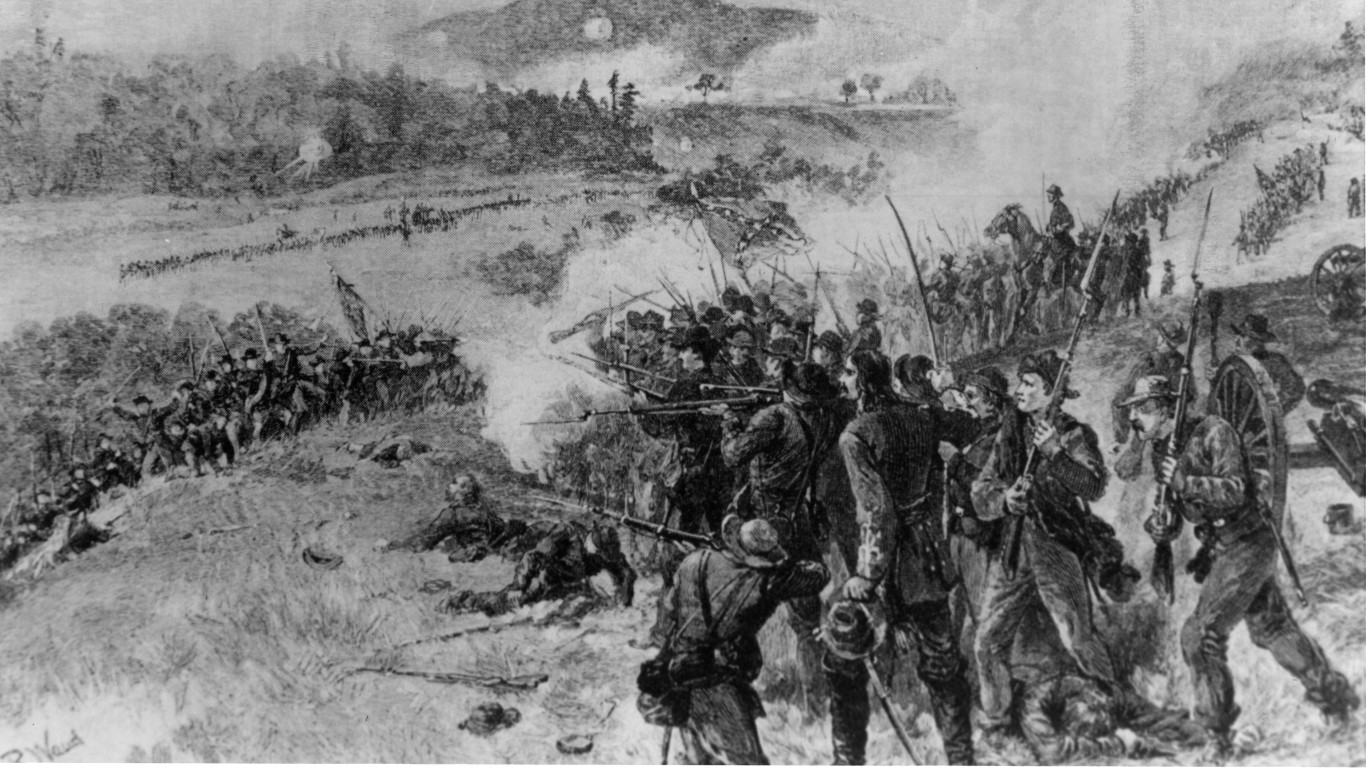
Chickamauga, Georgia (Sept. 18-20, 1863)
> War: Civil War
> Total combatants: 125,000
> U.S. combatants (Union): 60,000
This was the largest battle fought in the Western Theater. The Confederate Army, commanded by General Braxton Bragg, won a tactical victory against the Union Army led by General William Rosecrans – though the battle ended inconclusively and ultimately led to the Union’s successful siege of Chattanooga.
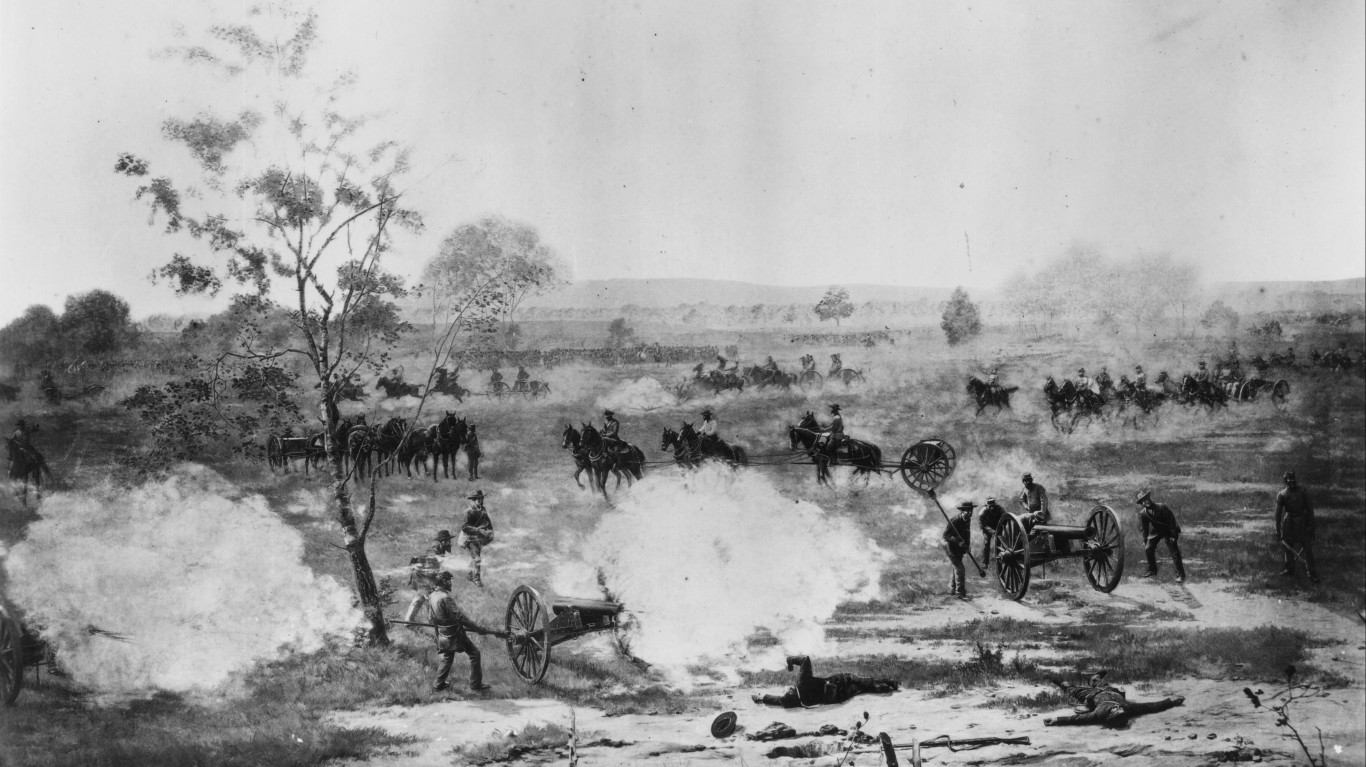
Second Battle of Bull Run, Virginia (Aug. 28-30, 1862)
> War: Civil War
> Total combatants: 125,000
> U.S. combatants (Union): 77,000
In a notable defeat for Union forces, General Robert E. Lee’s Army of Northern Virginia bested Union General John Pope’s Army of Virginia, resulting in a Confederate victory that allowed Lee to continue his invasion of the North and set the stage for the subsequent Battle of Antietam.
[in-text-ad-2]
Saipan (June 15-July 9, 1944)
> War: World War II
> Total combatants: 126,000
> U.S. combatants: 94,650
This was a crucial battle in the Pacific campaign. The United States forces, primarily Marines, successfully captured the island of Saipan, the largest of the Northern Mariana Islands, from the Japanese, marking a significant turning point in the war and providing a strategic base for future operations in the Pacific.
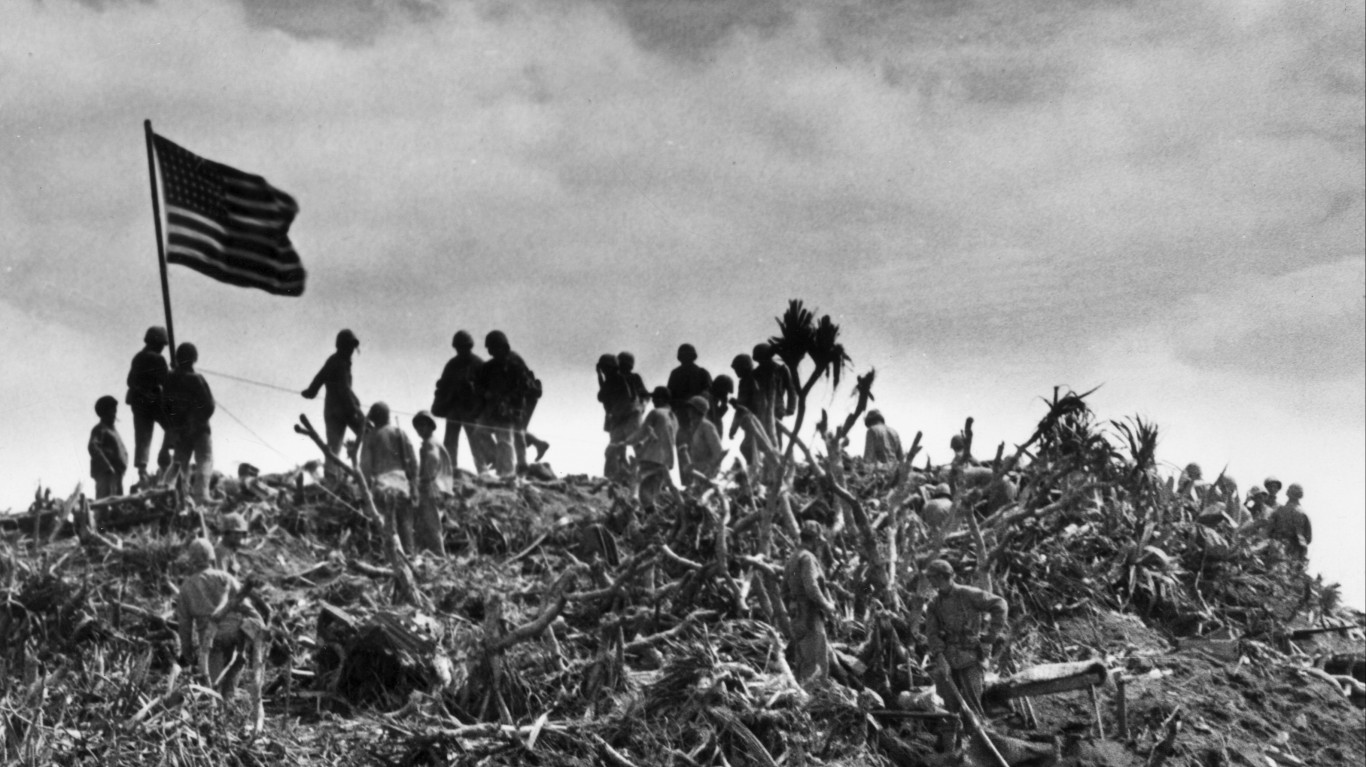
Iwo Jima (Feb. 19-March 26, 1945)
> War: World War II
> Total combatants: 131,000
> U.S. combatants: 110,000
Fought between U.S. Marines and Imperial Japanese forces, the Battle of Iwo Jima was a key engagement during the Pacific campaign. The capture of the small volcanic island was crucial for establishing air bases to support further operations, but it resulted in some of the bloodiest fighting in the war, with both sides sustaining heavy losses.
[in-text-ad]

Antietam, Maryland (Sept. 17, 1862)
> War: Civil War
> Total combatants: 132,000
> U.S. combatants (Union): 88,000
Remembered as the bloodiest single-day battle in American history, this was a major battle resulting in heavy casualties on both sides, but ultimately ending in a tactical draw. However, it gave a strategic advantage to the Union and served as a turning point in the war by dissuading foreign intervention and boosting Northern morale.

Operation Market Garden, Netherlands (Sept. 17-27, 1944)
> War: World War II
> Total combatants: 142,000
> U.S. combatants: 20,000
This was a bold Allied plan during World War II to seize key bridges in the Netherlands and open a direct route into Germany. Despite initial gains, the operation faced strong German resistance, leading to its failure and prolonging the war in Europe.
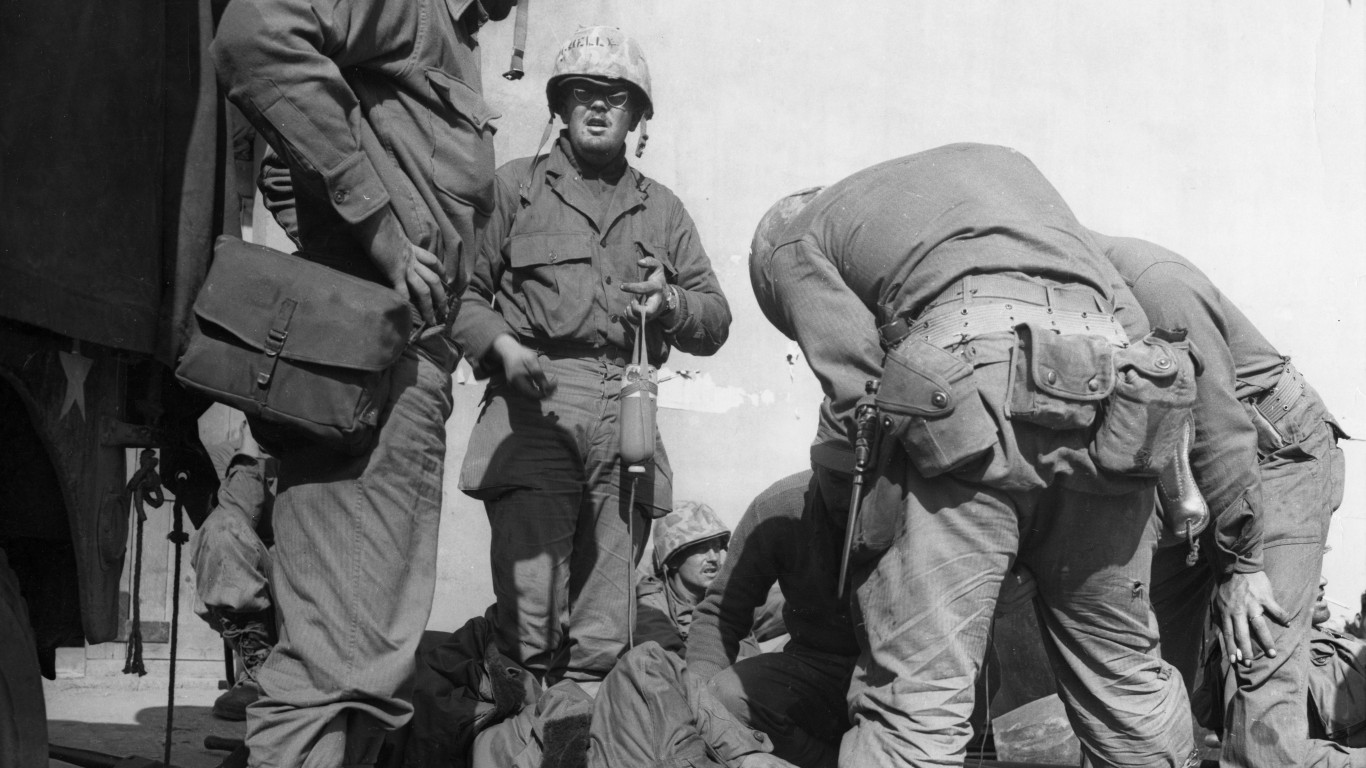
Chosin Reservoir, North Korea (Nov. 27-Dec. 13, 1950)
> War: Korean War
> Total combatants: 150,000
> U.S. combatants: 30,000
In this grueling conflict, outnumbered United Nations forces – including troops from the U.S., the U.K., and South Korea – fought against a massive Chinese offensive in harsh winter conditions. Despite heavy losses, the UN forces managed a tactical withdrawal, preserving their combat effectiveness and demonstrating their resilience in the face of adversity.
[in-text-ad-2]
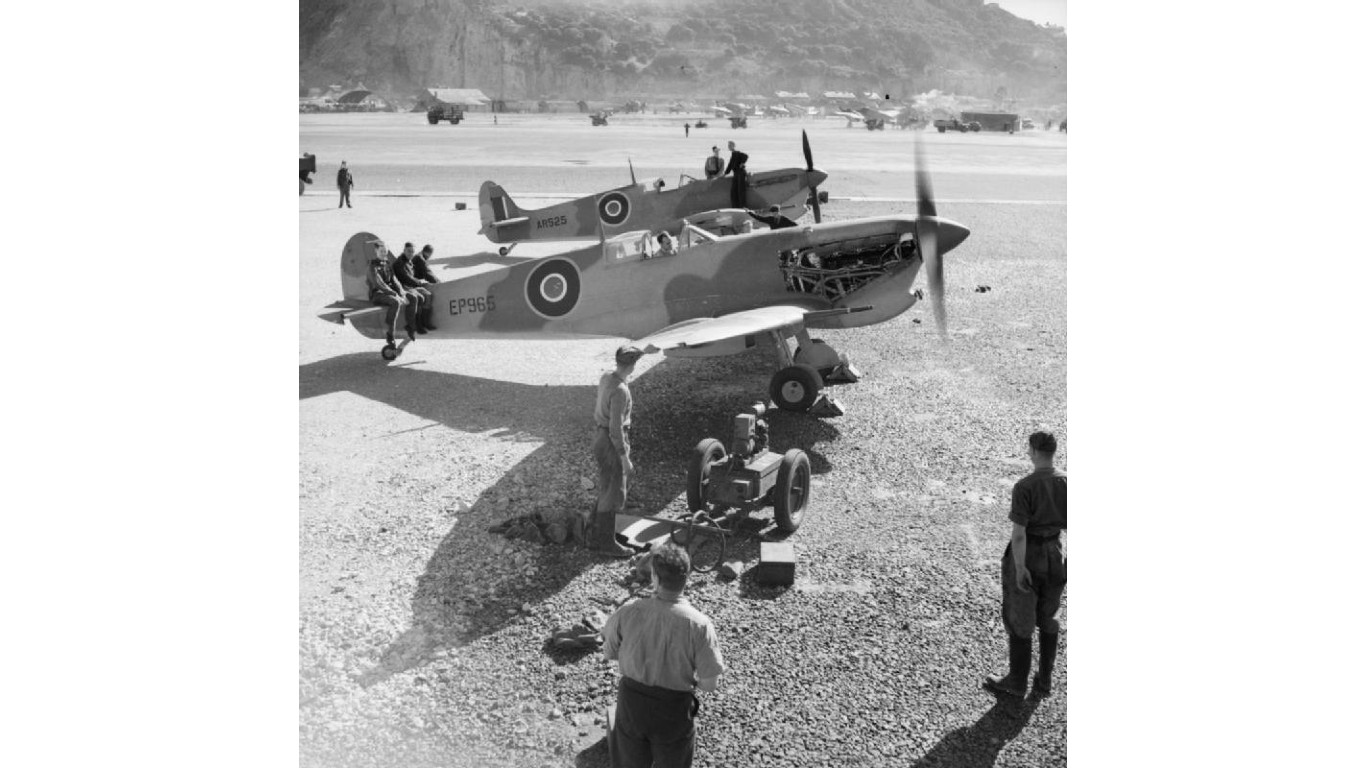
Operation Torch (Nov. 8-16, 1942)
> War: World War II
> Total combatants: 150,000
> U.S. combatants: 85,000
Operation Torch was a major military campaign involving Allied forces – primarily American, British, and French troops – who launched a series of amphibious landings in Morocco and Algeria. The objective of the operation was to secure North Africa and gain a foothold for future Allied offensives against Axis-controlled territories. Despite initial difficulties and resistance from the Vichy French forces, the Allies successfully established a significant North African presence, marking a watershed moment in the war.
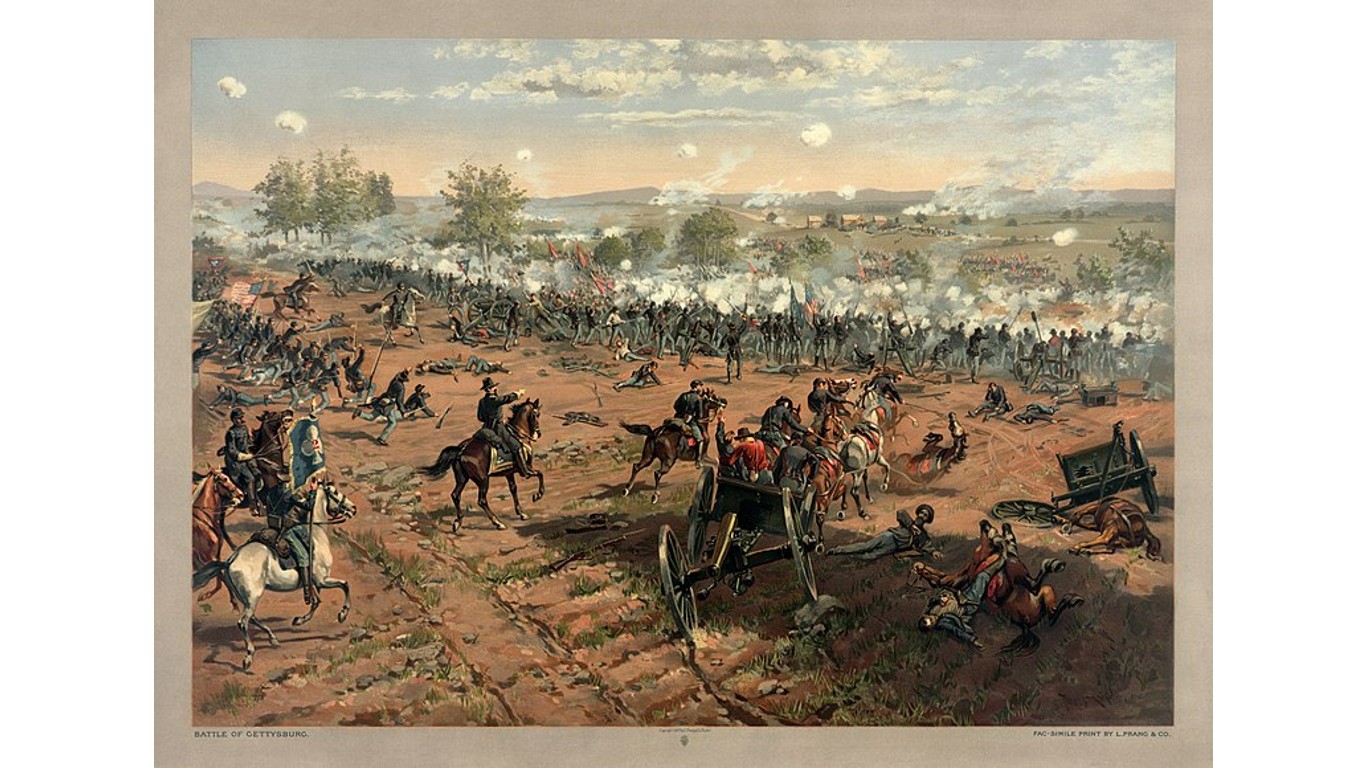
Gettysburg, Pennsylvania, (July 1-3, 1863)
> War: Civil War
> Total combatants: 165,620
> U.S. combatants (Union): 94,000
Considered a critical turning point in the Civil War, the Battle of Gettysburg saw the Union Army successfully repel Confederate forces, ending General Robert E. Lee’s second invasion of the North. The battle, which resulted in high casualties on both sides, is especially remembered for Pickett’s Charge, a failed Confederate assault led by George Pickett and two other Rebel generals, that showcased the futility of frontal attacks.
[in-text-ad]
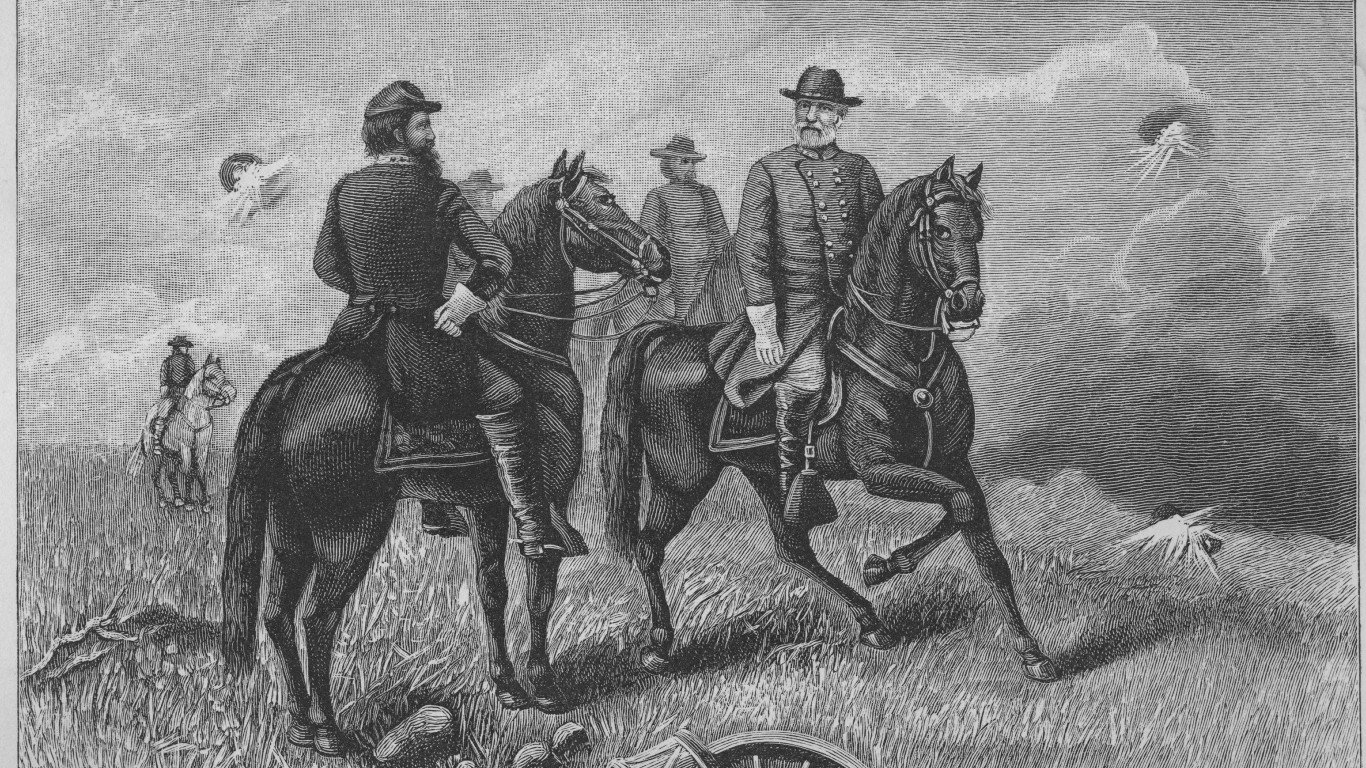
Cold Harbor, Virginia (May 31-June 12, 1864)
> War: Civil War
> Total combatants: 170,000
> U.S. combatants (Union): 110,000
This was a Union assault on Confederate defenses in Virginia, the culmination of the Overland Campaign. The attack was repulsed with heavy Union losses – an estimated 12,000 casualties – making Cold Harbor one of the bloodiest battles of the war.
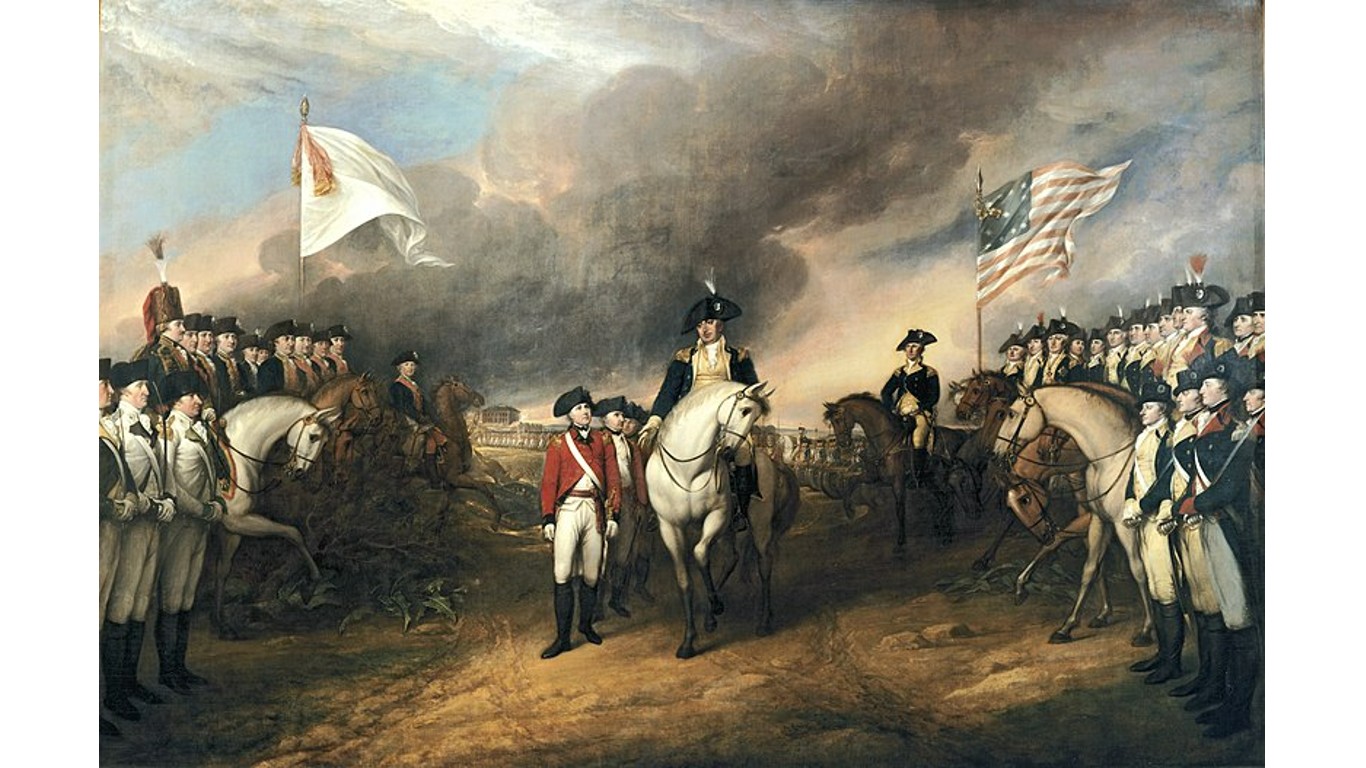
Yorktown, Virginia (April 5-May 4, 1862)
> War: Civil War
> Total combatants: 175,000
> U.S. combatants (Union): 102,700
In the final major battle of the Revolutionary War, American and French forces, led by General George Washington and General Comte de Rochambeau, surrounded the British army under General Charles Cornwallis in Yorktown, Virginia. With the aid of a French naval blockade, they forced the British to surrender, leading the British government to negotiate an end to the war.
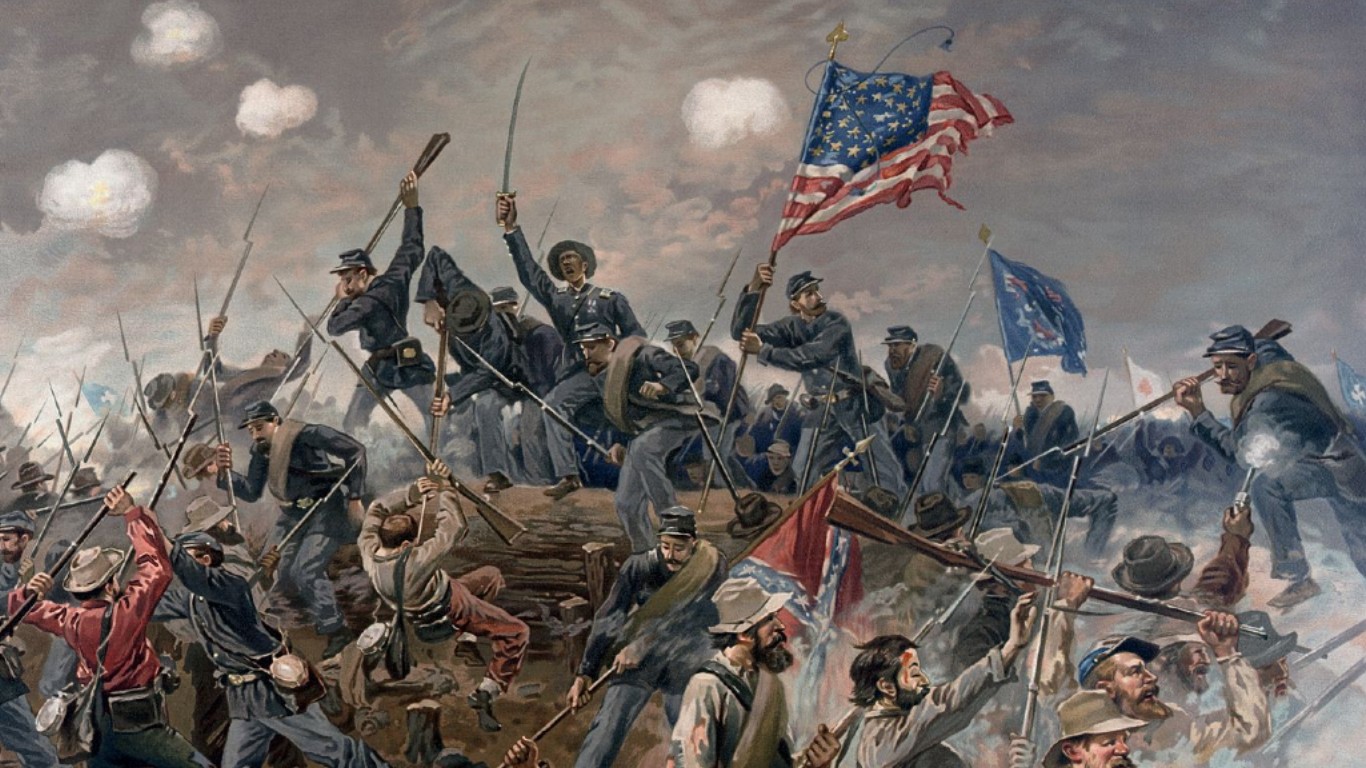
Spotsylvania Court House, Virginia (May 8-21, 1864)
> War: Civil War
> Total combatants: 178,000
> U.S. combatants (Union): 115,400
As part of the Overland Campaign, the Battle of Spotsylvania Court House witnessed fierce fighting and heavy casualties on both sides. The battle ended inconclusively, but its ferocity and high cost highlighted the challenges faced by Union forces in their efforts to defeat the Confederacy.
[in-text-ad-2]

The Wilderness, Virginia (May 5-7, 1864)
> War: Civil War
> Total combatants: 185,000
> U.S. combatants (Union): 119,000
The Battle of the Wilderness was a significant clash between the Union Army of the Potomac and the Confederate Army of Northern Virginia, characterized by intense forested combat and heavy casualties. It marked the beginning of General Ulysses S. Grant’s Overland Campaign and set the stage for a series of brutal engagements in Virginia. While the battle was a tactical draw, it was a strategic victory for the Union, as it forced Lee to abandon his defensive strategy and engage in a war of attrition.

Chancellorsville, Virginia (April 30-May 6, 1863)
> War: Civil War
> Total combatants: 194,000
> U.S. combatants (Union): 133,000
This significant battle was fought between Union forces led by General Joseph Hooker and Confederate forces commanded by Lee. Despite being outnumbered, Lee executed a daring flanking maneuver that resulted in a Confederate victory but came at the cost of the life of General Stonewall Jackson, one of Lee’s most trusted commanders.
[in-text-ad]

Hürtgen Forest, Germany (Sept. 19, 1944-Dec. 16, 1944)
> War: World War II
> Total combatants: 200,000
> U.S. combatants: 120,000
Fought in the dense and heavily fortified forest near the German-Belgian border, the battle resulted in heavy casualties and limited territorial gains for the Allied forces. It is remembered for its challenging terrain, harsh weather conditions, and tenacious German defense, making it one of the longest and deadliest battles in the history of the U.S. Army.
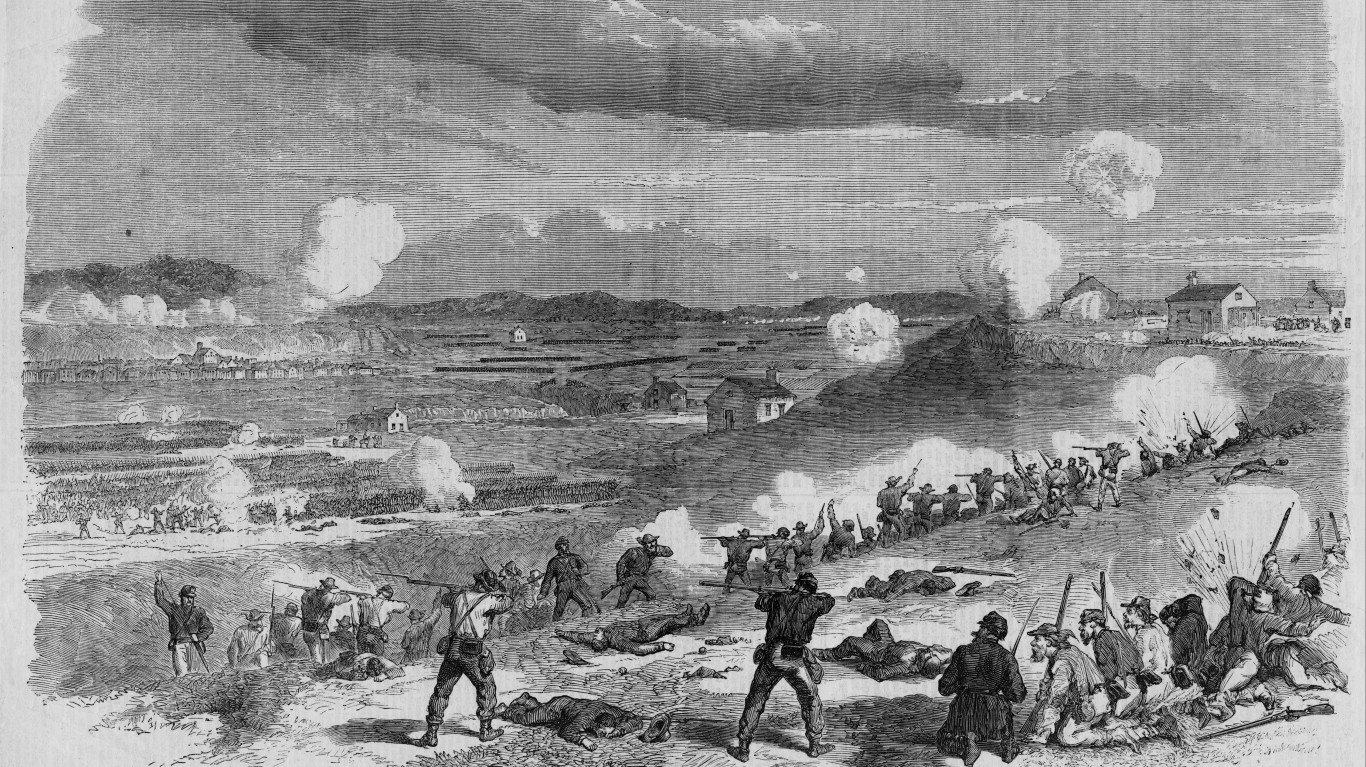
Fredericksburg, Virginia (Dec. 11-15, 1862)
> War: Civil War
> Total combatants: 201,000
> U.S. combatants (Union): 122,000
The battle was fought between the Confederate Army of Northern Virginia, commanded by Lee, and the Union Army of the Potomac, led by Major General Ambrose Burnside. The battle resulted in a decisive Confederate victory, as the Union forces suffered heavy casualties during their repeated frontal assaults against well-entrenched Confederate positions on Marye’s Heights.
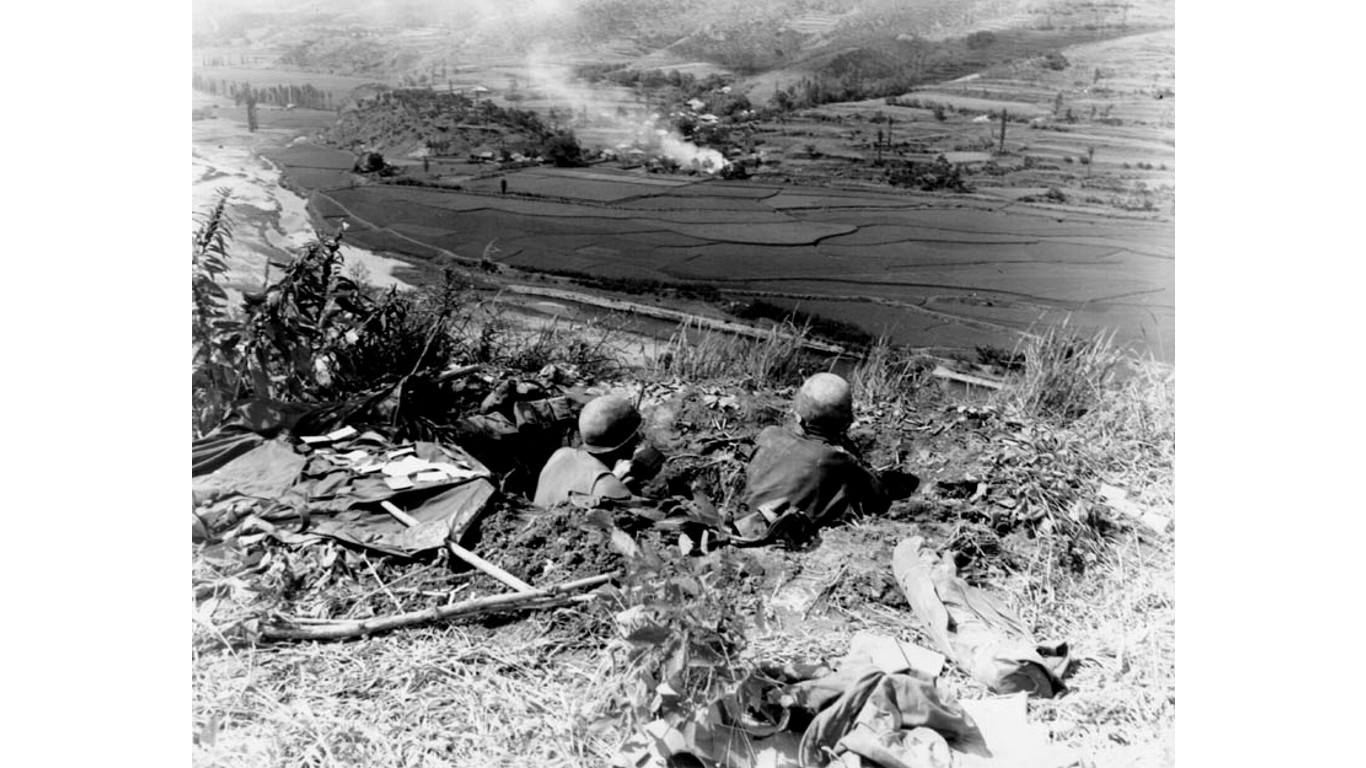
Pusan Perimeter, South Korea (Aug. 4-Sept.18, 1950)
> War: Korean War
> Total combatants: 239,000
> U.S. combatants: 180,000
United Nations forces, led primarily by the United States, defended the city of Pusan, in the southeastern end of the Korean Peninsula, against a massive North Korean offensive. Despite being heavily outnumbered and facing intense enemy attacks, the UN forces successfully held the perimeter, buying time for reinforcements to arrive. Their success ultimately led to a counteroffensive by the Allies and a shift in momentum in their favor.
[in-text-ad-2]
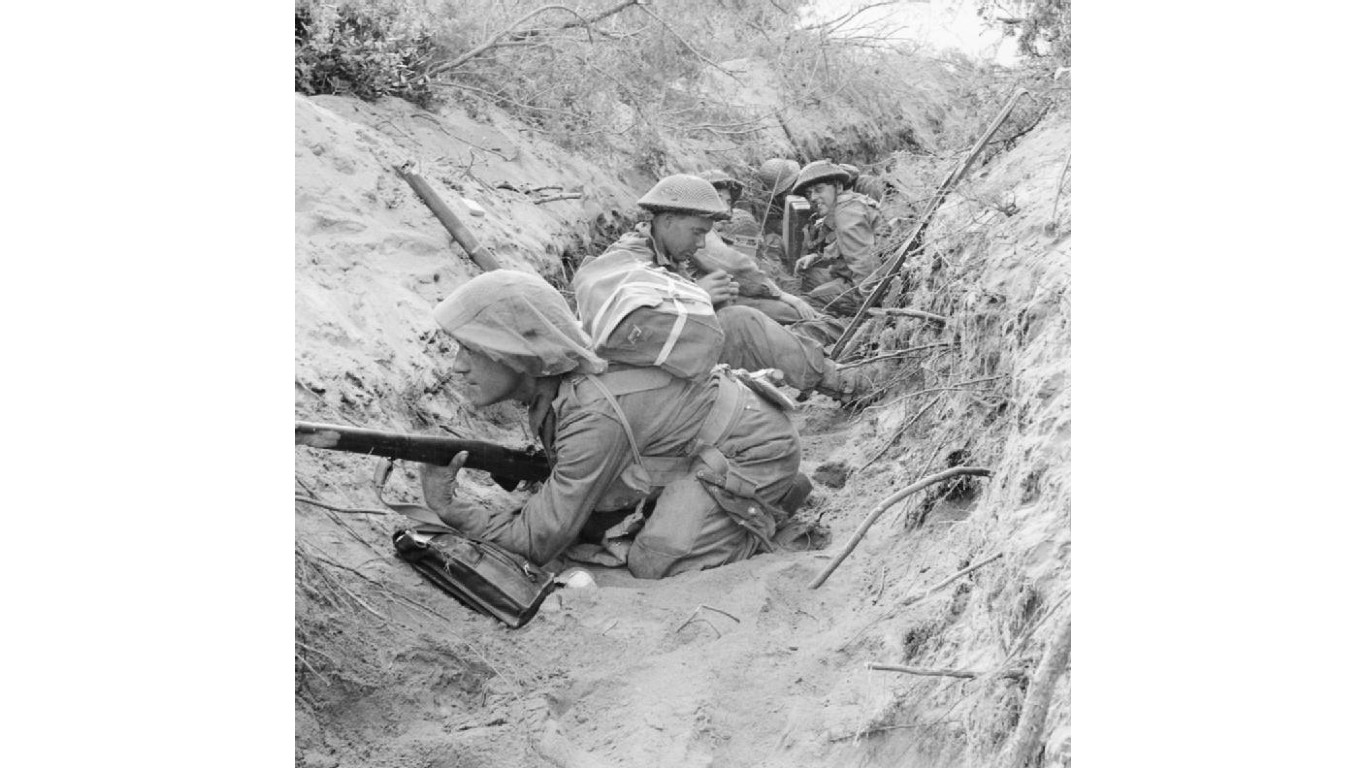
Anzio, Italy (Jan. 22-June 5, 1944)
> War: World War II
> Total combatants: 285,000
> U.S. combatants: 36,000
This crucial amphibious landing operation by Allied forces on the Italian coast was planned to bypass the heavily fortified Gustav Line and seize the port of Anzio, establishing a beachhead for an eventual advance towards Rome. However, the operation faced fierce resistance from German forces, resulting in a protracted and bloody stalemate. Despite the challenges, the Allies managed to maintain their position, and the battle served as a significant diversionary tactic that eventually contributed to the liberation of Rome later in June.

Monte Cassino, Italy (Jan. 17-May 18, 1944)
> War: World War II
> Total combatants: 380,000
> U.S. combatants: 40,000
The objective of this battle was to capture the strategically important hill of Monte Cassino, which was fortified by German troops and served as a key defensive position in the Gustav Line. The battle was marked by intense fighting, with the Allies facing difficult terrain, strong German defenses, and harsh weather conditions. Ultimately, after several failed attempts, the Allies were able to break through and capture the hill, facilitating the Allied advance in Italy.
[in-text-ad]

Leyte Gulf, Philippines (Oct. 23-26, 1944)
> War: World War II
> Total combatants: 282,000-400,000
> U.S. combatants: 160,000
The Battle of Leyte Gulf was a major naval engagement that took place in the waters surrounding the Philippine island of Leyte. It was a decisive victory over the Imperial Japanese Navy. The battle involved a series of coordinated attacks, including naval gunfire, air strikes, and the first organized use of kamikaze attacks by the Japanese. The Allied victory in Leyte Gulf marked a turning point in the Pacific War and paved the way for the eventual liberation of the Philippines.
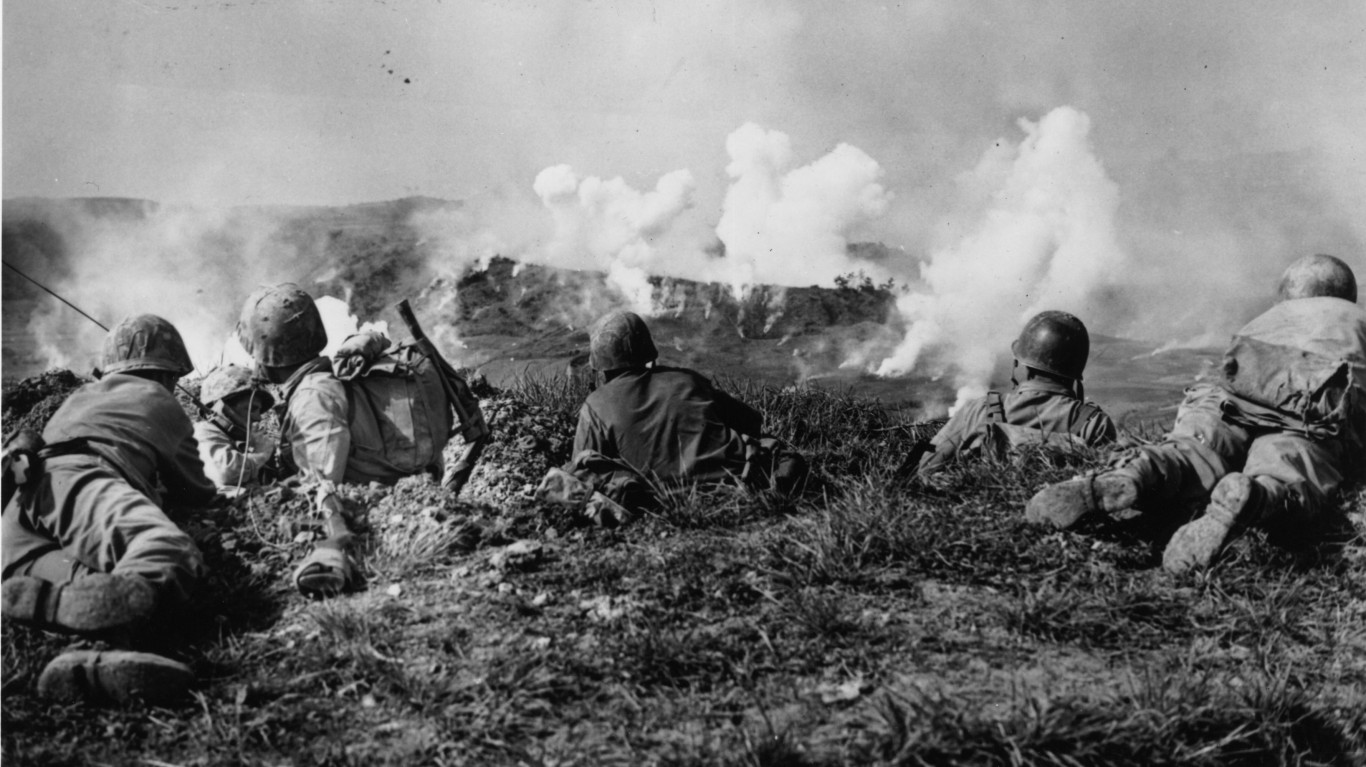
Okinawa (April 1-June 22, 1945)
> War: World War II
> Total combatants: 600,000-800,000
> U.S. combatants: 183,000
The Battle of Okinawa was the largest amphibious assault in the Pacific Theater, with U.S. forces aiming to capture the Japanese island of Okinawa. The battle was fiercely contested, resulting in heavy casualties on both sides, and it provided the Americans with a glimpse of the ferocity that could be expected in a potential invasion of mainland Japan – contributing to the decision to drop the atomic bomb on Hiroshima and Nagasaki in an effort to force the war to an end.

Ruhr Pocket, Germany (April 1945)
> War: World War II
> Total combatants: 825,000
> U.S. combatants: 317,000
Following years of strategic Allied bombing of key industrial sites in the region, the Ruhr Pocket Offensive in Germany resulted in the capture of approximately 317,000 German troops, including 24 generals, by the American forces. It was a significant blow to German military capabilities and contributed to the final collapse of Nazi Germany.
[in-text-ad-2]

Invasion of Southern France (Aug. 15-Sept. 14, 1944
> War: World War II
> Total combatants: 877,000
> U.S. combatants: 250,000
The invasion, code-named Operation Dragoon, aimed to secure vital ports on the French Mediterranean coast and increase pressure on German forces by opening another front. The successful operation facilitated the liberation of southern France and disrupted German defenses.
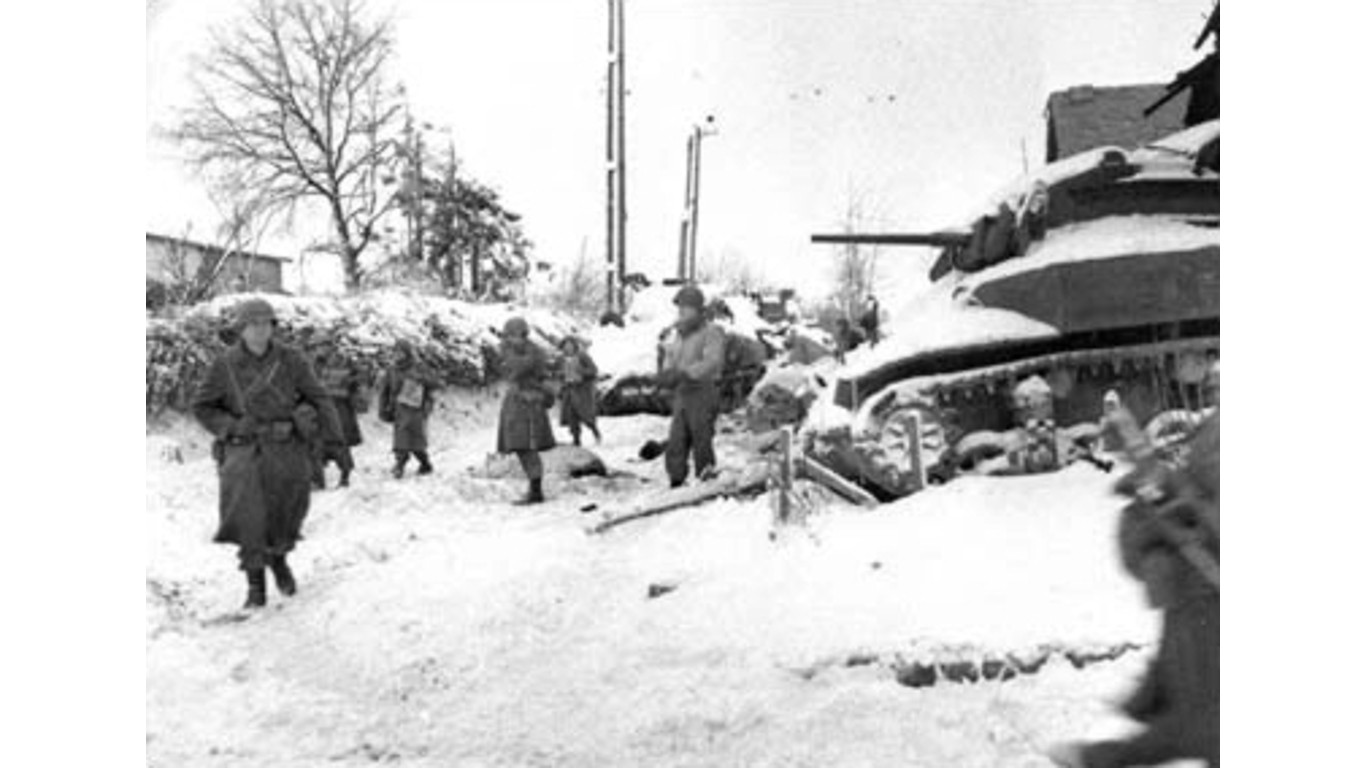
Bulge, Belgium and Luxembourg (Dec.16, 1944-Jan. 28, 1945)
> War: World War II
> Total combatants: 1 million
> U.S. combatants: 500,000-600,000
The German gamble to split the western Allies and force a separate peace with the Soviet Union failed as the Allies successfully defended against the surprise offensive, pushing back German forces and leading to the eventual defeat of Nazi Germany.
[in-text-ad]
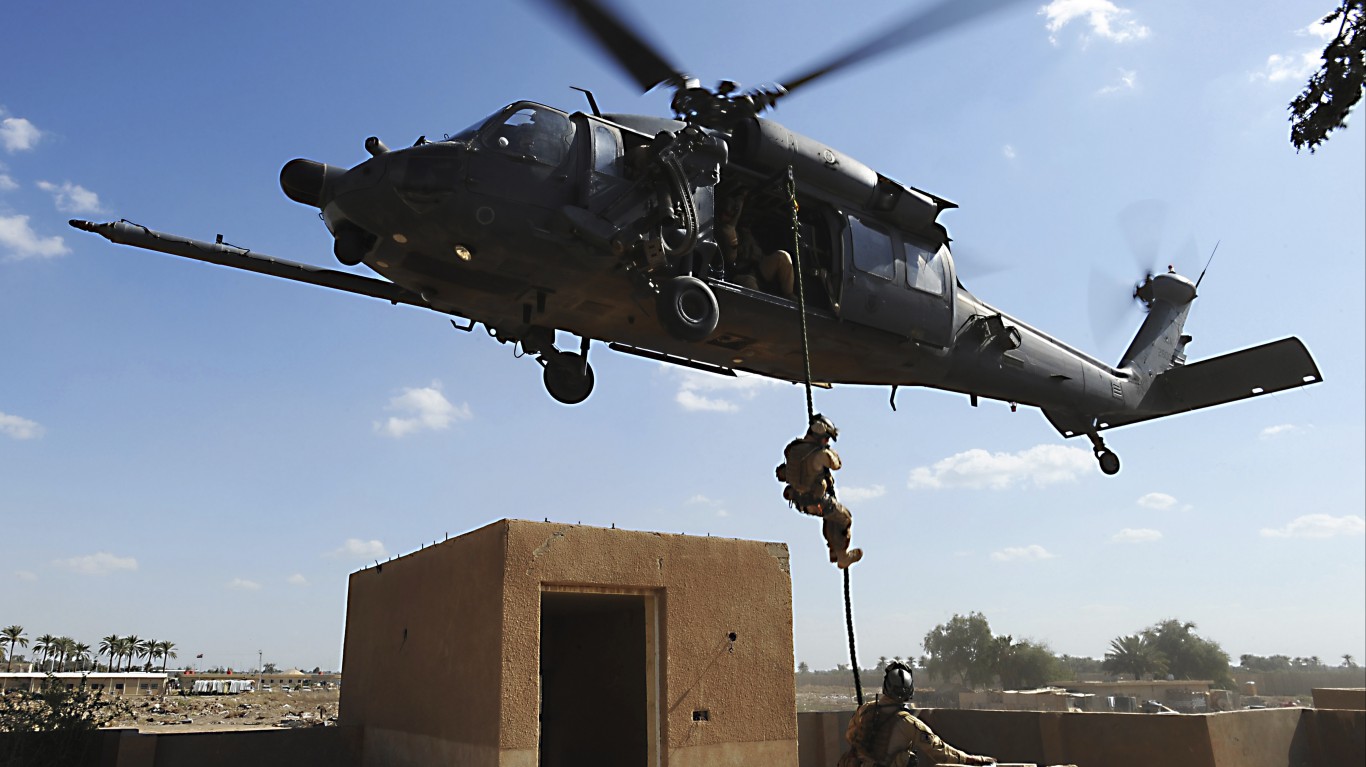
Operation Iraqi Freedom, Iraq (March 20-May 1, 2003)
> War: War on terrorism
> Total combatants: 1.1 million
> U.S. combatants: 584,800
Led by the United States, the invasion of Iraq aimed to topple the regime of Saddam Hussein, falsely believed to be harboring weapons of mass destruction and incorrectly blamed by some for a part in the tragedy of Sept. 11. The coalition forces successfully removed Iraqi forces from power, but the subsequent years were marked by ongoing conflict and instability in the region.
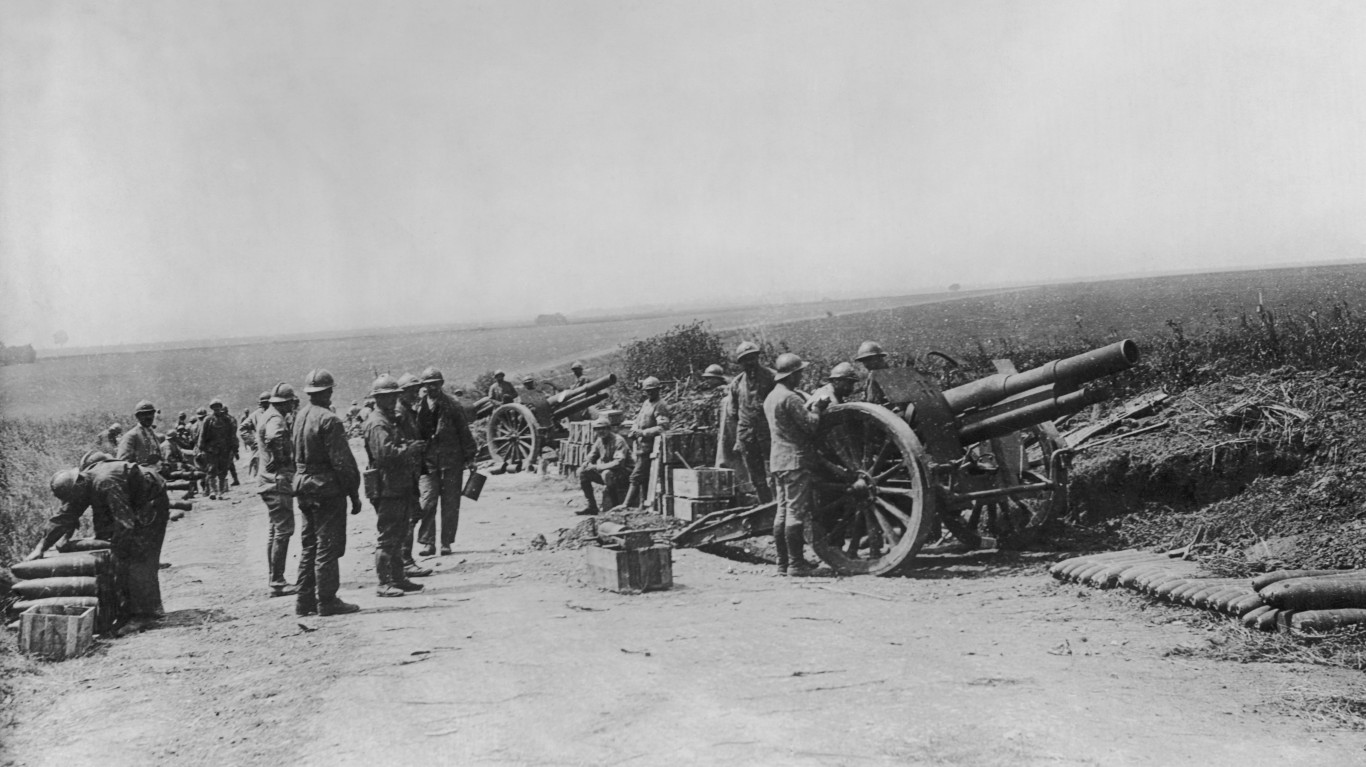
Second Battle of the Marne, France (July 15-18, 1918)
> War: World War I
> Total combatants: 1.2 million
> U.S. combatants: 400,000
This battle marked a turning point in the war as the Allied forces, including French, American, and British troops, successfully repelled a major German offensive and launched a decisive counterattack that led to the eventual collapse of the Central Powers. The battle demonstrated the growing strength and coordination of the Allied forces and signaled the beginning of a series of offensives that would ultimately lead to the end of the war.
Saint-Mihiel, France (Sept. 12-16, 1918)
> War: World War I
> Total combatants: 1.2 million
> U.S. combatants: 550,000
One of the first major offensives conducted by the American Expeditionary Forces under the command of General John J. Pershing, this battle aimed to reduce a salient in the German front lines near the town of Saint-Mihiel in northeastern France. Through a combination of meticulous planning, coordination, and the effective use of air power, the AEF successfully captured the salient and achieved a decisive victory.
[in-text-ad-2]

Crossing the Rhine River, (March 23-27, 1945)
> War: World War II
> Total combatants: 1.4 million
> U.S. combatants: 300,000
In an offensive also known as Operation Plunder, Allied forces crossed the formidable Rhine, a natural boundary between Germany and France, marking a significant milestone in the Allied advance, further weakening German defenses, and hastening the end of the war.
Operation Desert Storm, Kuwait (Jan. 17-Feb. 28, 1991)
> War: Gulf War
> Total combatants: 1.7 million
> U.S. combatants: 700,000
The Gulf War coalition, led by the United States, launched a successful military campaign to expel occupying Iraqi forces from Kuwait. The operation demonstrated the effectiveness of combined air and ground operations and achieved its objective of restoring Kuwait’s sovereignty.
[in-text-ad]

Meuse-Argonne, France (Sept. 26-Nov. 11, 1918)
> War: World War I
> Total combatants: 1.7 million
> U.S. combatants: 1.2 million
The Meuse-Argonne Offensive, the largest operation by the American Expeditionary Forces in World War I, resulted in heavy casualties but played a crucial role in the final Allied push against Germany. It was a decisive campaign that contributed to Germany’s ultimate surrender.

Tet Offensive, South Vietnam (Jan. 31-Sept. 23, 1968)
> War: Vietnam War
> Total combatants: 1.9 million
> U.S. combatants: 543,000
This three-phase offensive by North Vietnamese and Viet Cong forces caught U.S. and South Vietnamese troops by surprise, resulting in initial success for the communists. Although they were ultimately repelled, the Tet Offensive significantly shifted American public opinion against the war, causing many to finally deem it unwinnable.
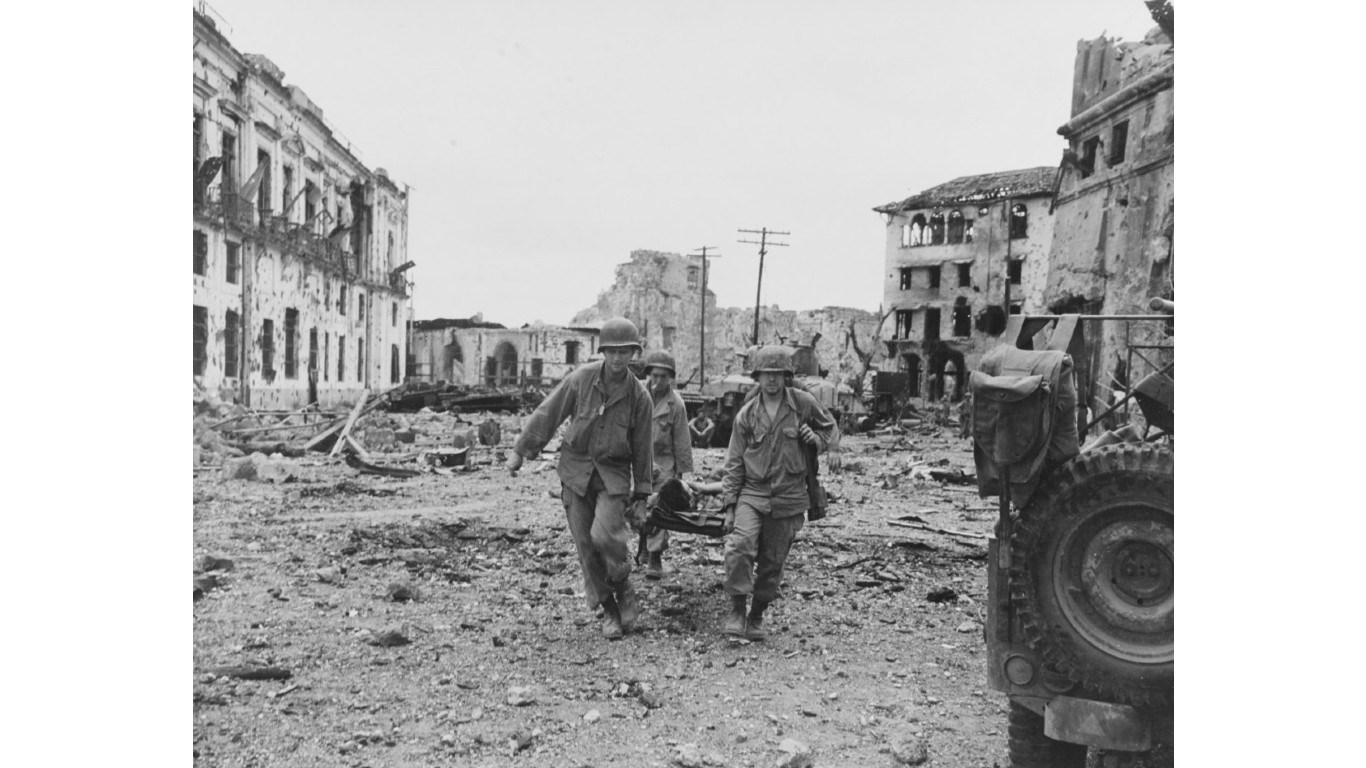
Philippines (Oct. 20, 1944-Aug. 15, 1945)
> War: World War II
> Total combatants: 1.9 million
> U.S. combatants: 1.3 million
This battle pitted Allied forces, led by the United States, against the occupying Japanese forces in the Philippines, in an effort to liberate the islands. The battle encompassed numerous engagements, including the landings at Leyte, the Battle of Manila, and various subsequent operations to retake other major Philippine islands. It resulted in a decisive Allied victory, significantly weakening Japanese forces.
[in-text-ad-2]
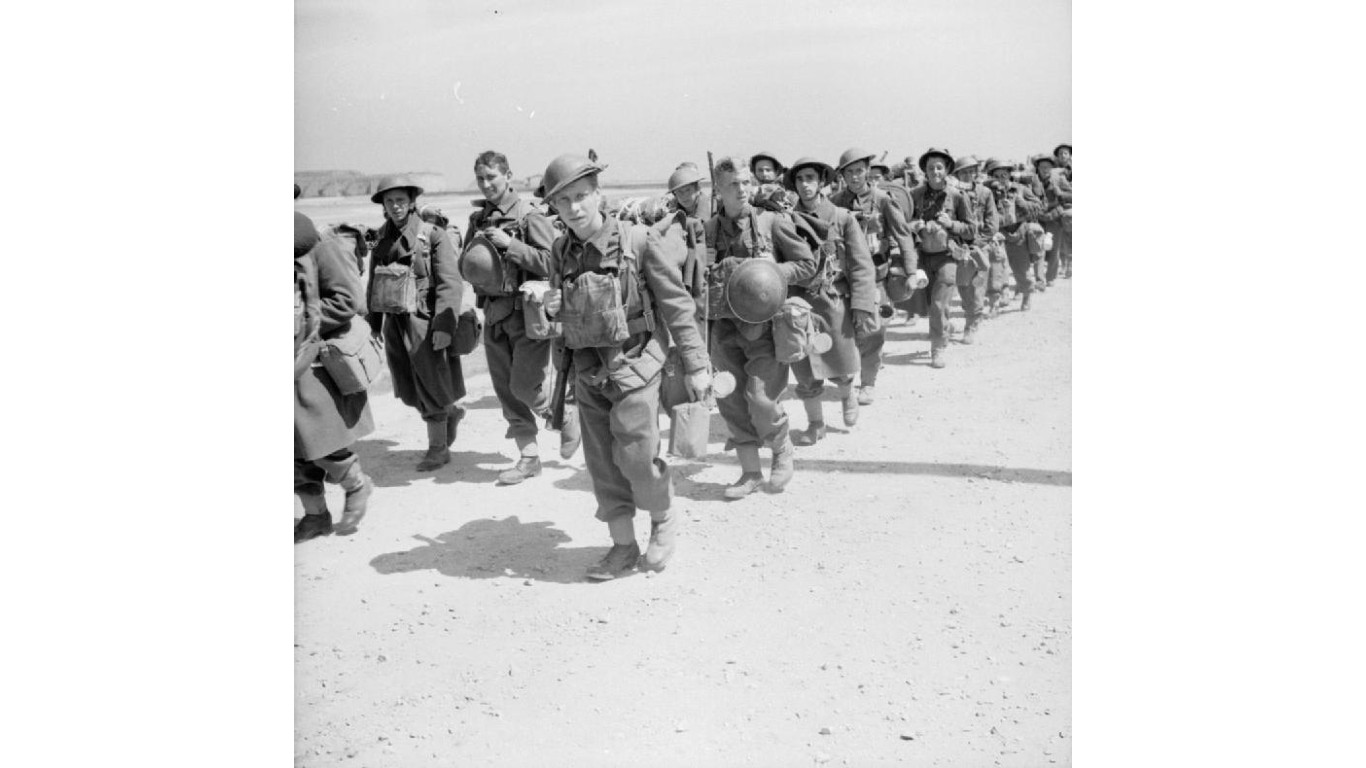
Battle of France (June 6-Aug. 30, 1944)
> War: World War II
> Total combatants: 2.7 million
> U.S. combatants: 1.5 million
The Allied invasion of Normandy, known as Operation Overlord, began with the offensive commonly called D-Day. It was the largest amphibious assault in history, and the continuing battle that followed the landing opened up the Western Front and trapped the forces of the Third Reich between the advancing Allies in the west and the Soviet Red Army in the east – ultimately leading to the liberation of France and the defeat of Nazi Germany.
Take Charge of Your Retirement In Just A Few Minutes (Sponsor)
Retirement planning doesn’t have to feel overwhelming. The key is finding expert guidance—and SmartAsset’s simple quiz makes it easier than ever for you to connect with a vetted financial advisor.
Here’s how it works:
- Answer a Few Simple Questions. Tell us a bit about your goals and preferences—it only takes a few minutes!
- Get Matched with Vetted Advisors Our smart tool matches you with up to three pre-screened, vetted advisors who serve your area and are held to a fiduciary standard to act in your best interests. Click here to begin
- Choose Your Fit Review their profiles, schedule an introductory call (or meet in person), and select the advisor who feel is right for you.
Why wait? Start building the retirement you’ve always dreamed of. Click here to get started today!
Thank you for reading! Have some feedback for us?
Contact the 24/7 Wall St. editorial team.
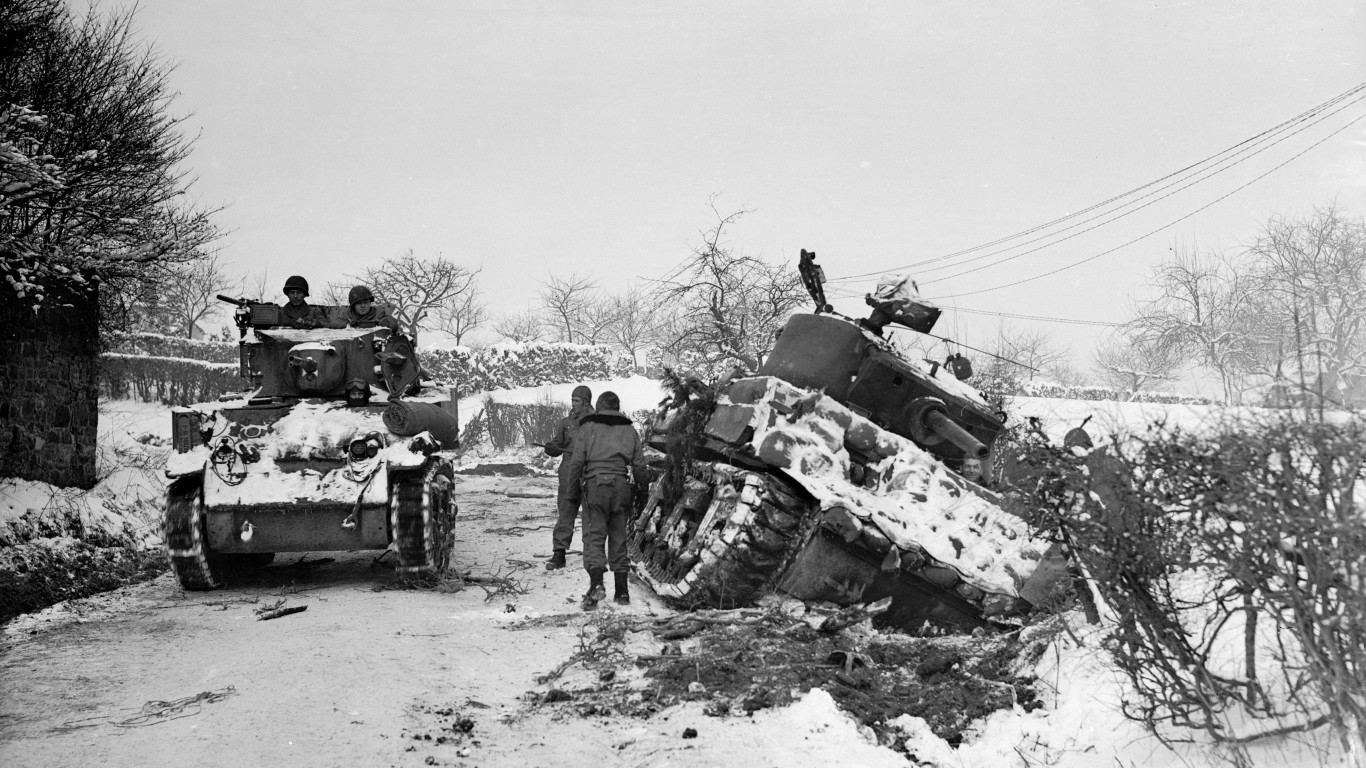 24/7 Wall St.
24/7 Wall St.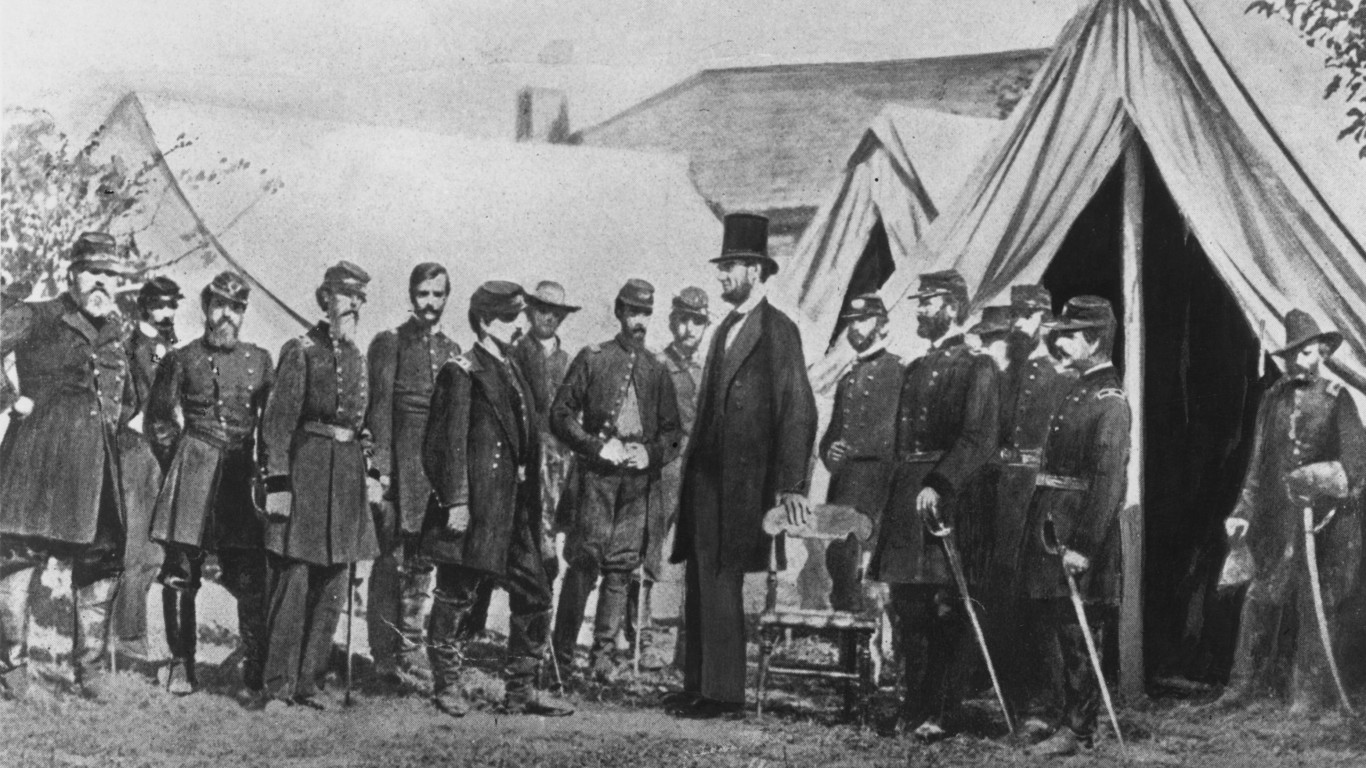 24/7 Wall St.
24/7 Wall St.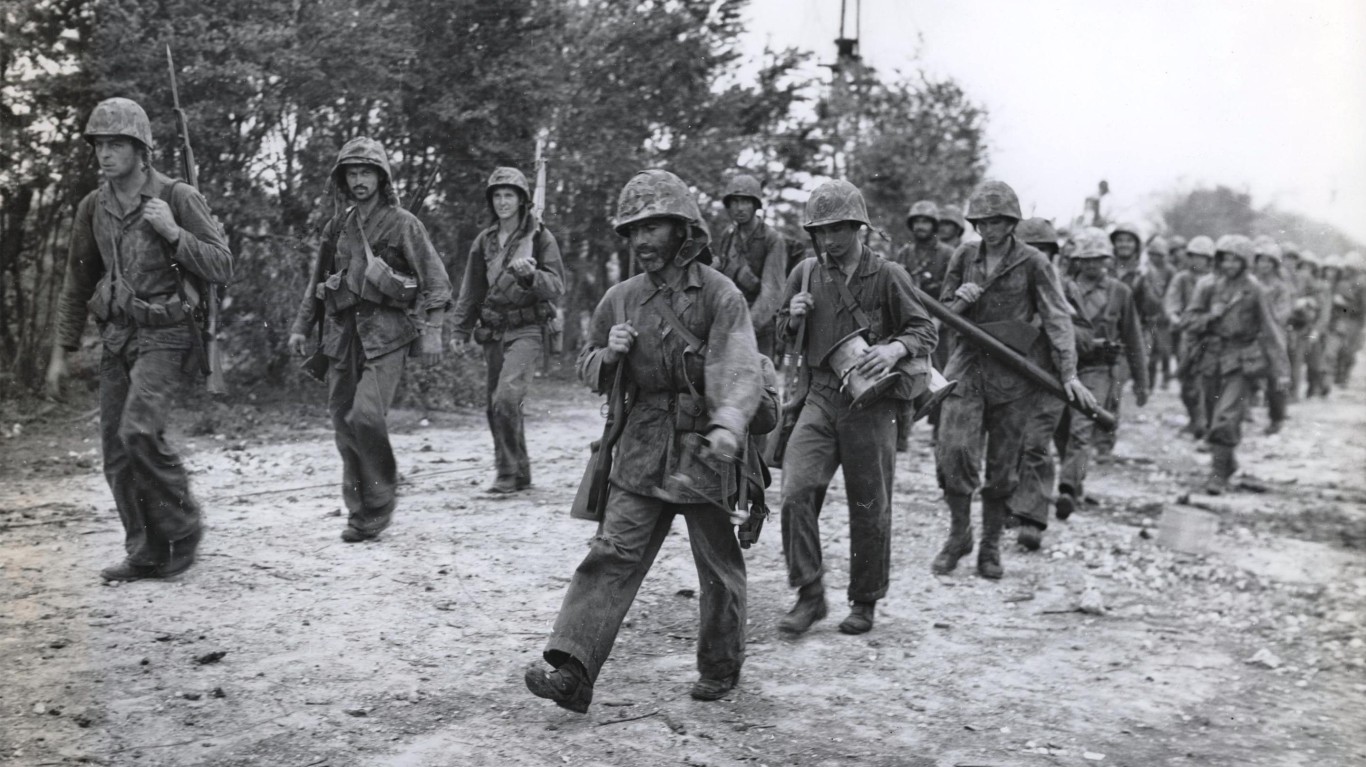
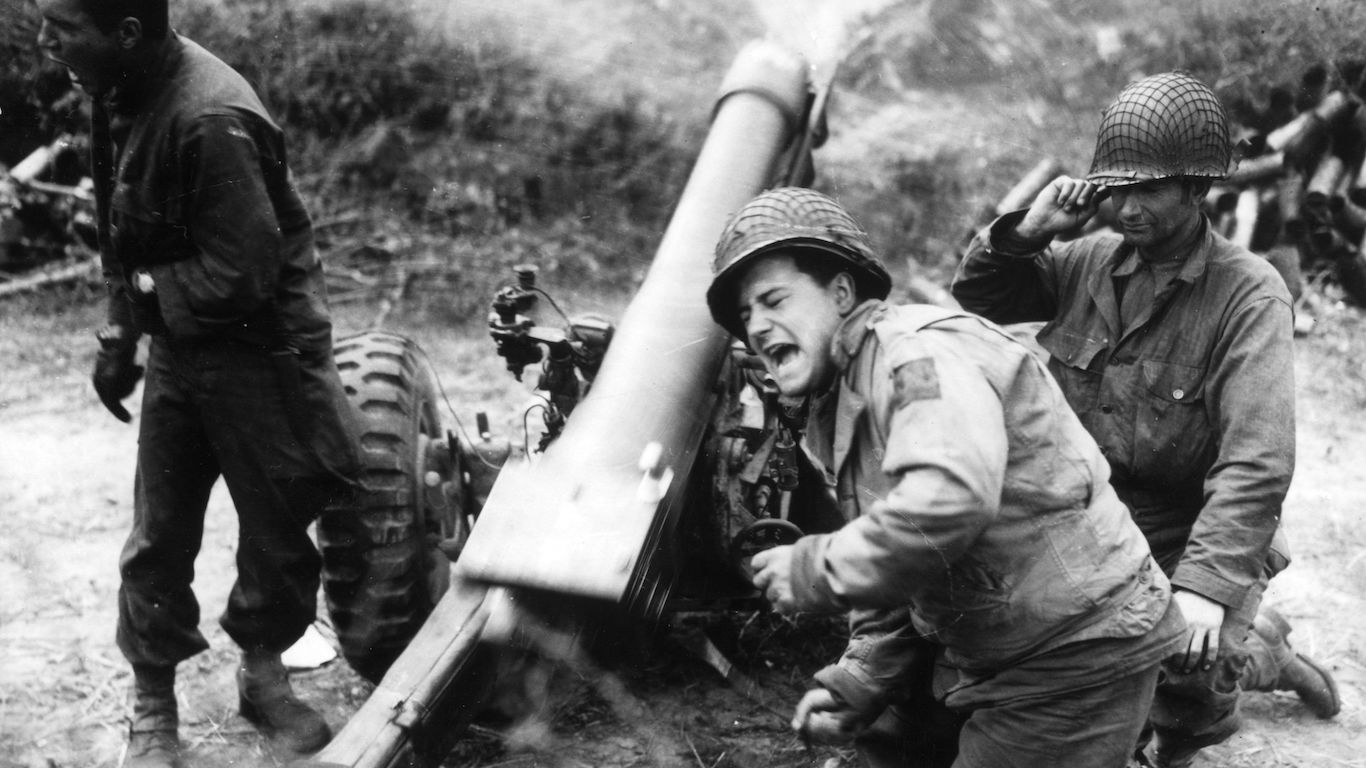 24/7 Wall St.
24/7 Wall St.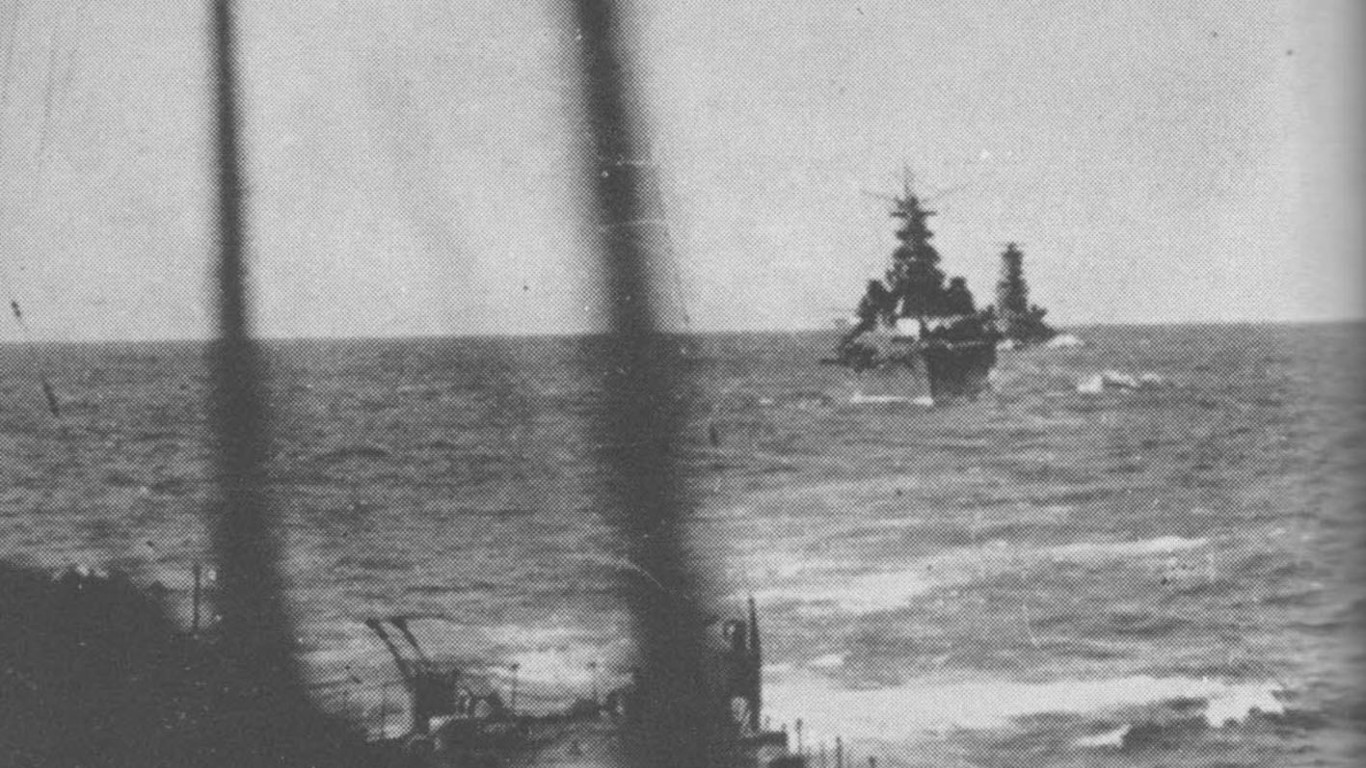 24/7 Wall St.
24/7 Wall St.